I had a great time last weekend at the Kansas Auctioneer Association convention in Wichita. I decided on a whim to compete in the Kansas Auctioneer Championship, something I hadn’t done since 2009 when I took fifth place. This year I took fourth.
2023 on the farm
2023 was a mixed year on the farm, marked by a disastrous wheat harvest, continued research and trials surrounding the compost extract project, upgrades to equipment and a slightly better than average fall harvest. After last year’s drought-induced fall harvest disaster, it’s nice to end the year on some exciting and promising notes.
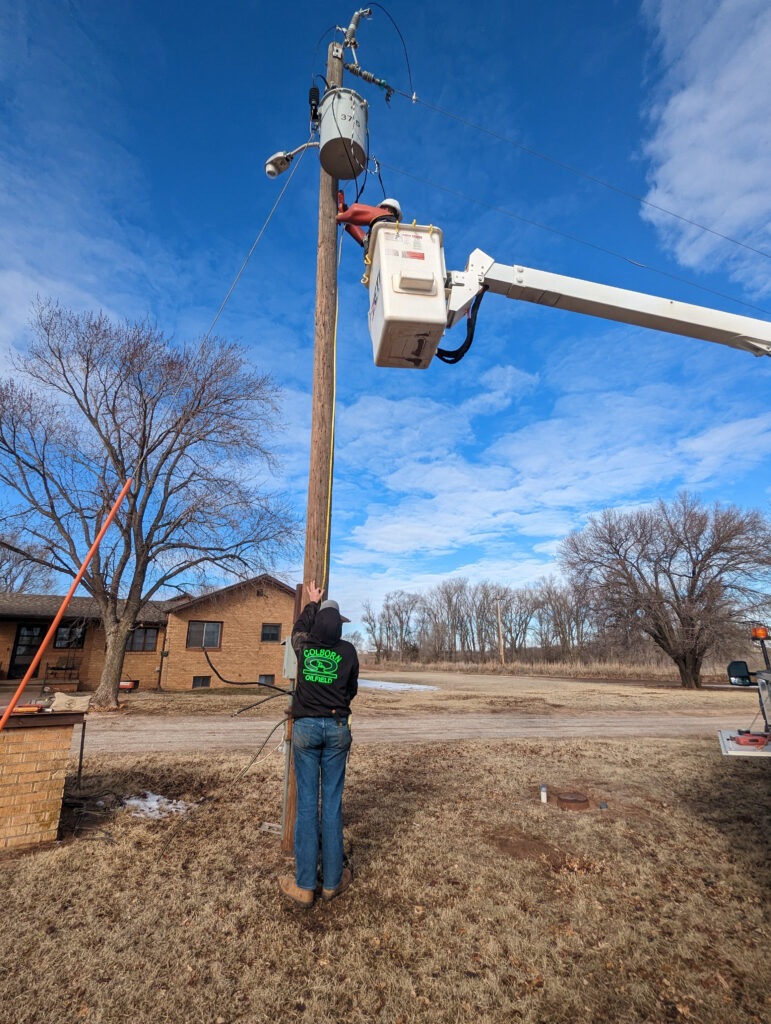
January found us upgrading the electrical transformer to the house. Our electrical usage is substantially more than what Grandma’s was, and the old transformer wasn’t cutting it anymore and the loop was shorting and causing some brownouts.
Later in January was the awards banquet for the Barber County Conservation District. We were notified that we won the award for 2022 last fall, but the award was given this year and made for a pretty great family photo!

They say no-till really shows its value in challenging years. This photo from February shows our wheat on the Winter place on the right and the neighbor’s conventional tillage wheat on the left. Both suffered from the drought, but it’s pretty clear the right side had more moisture and less wind erosion.
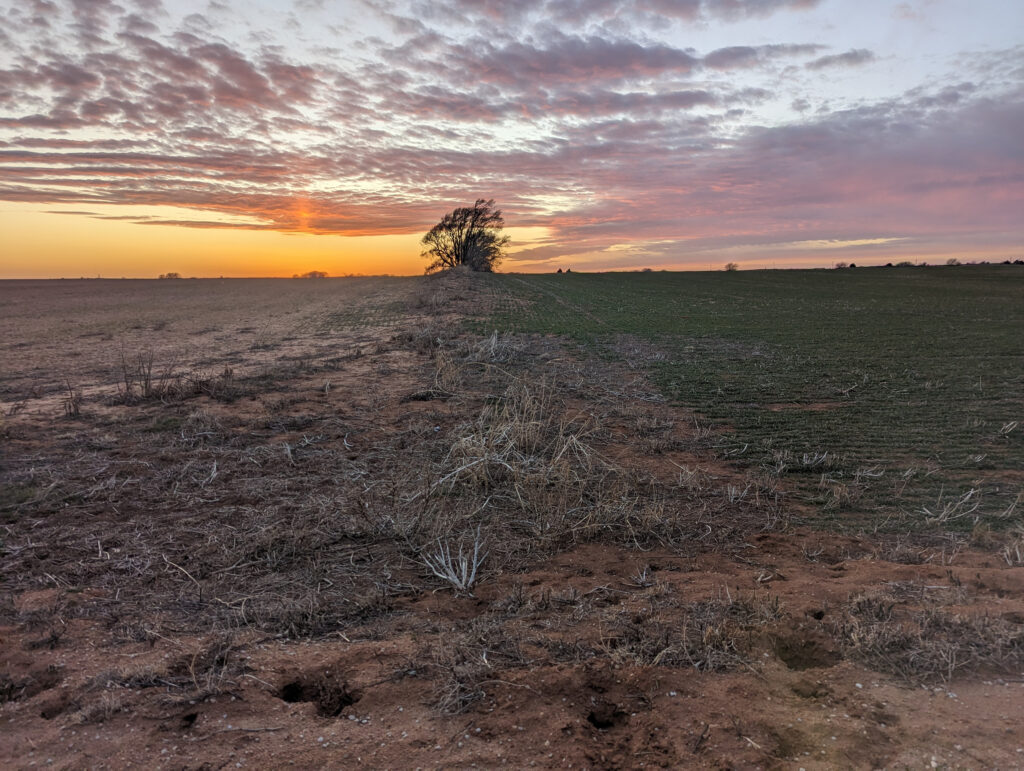
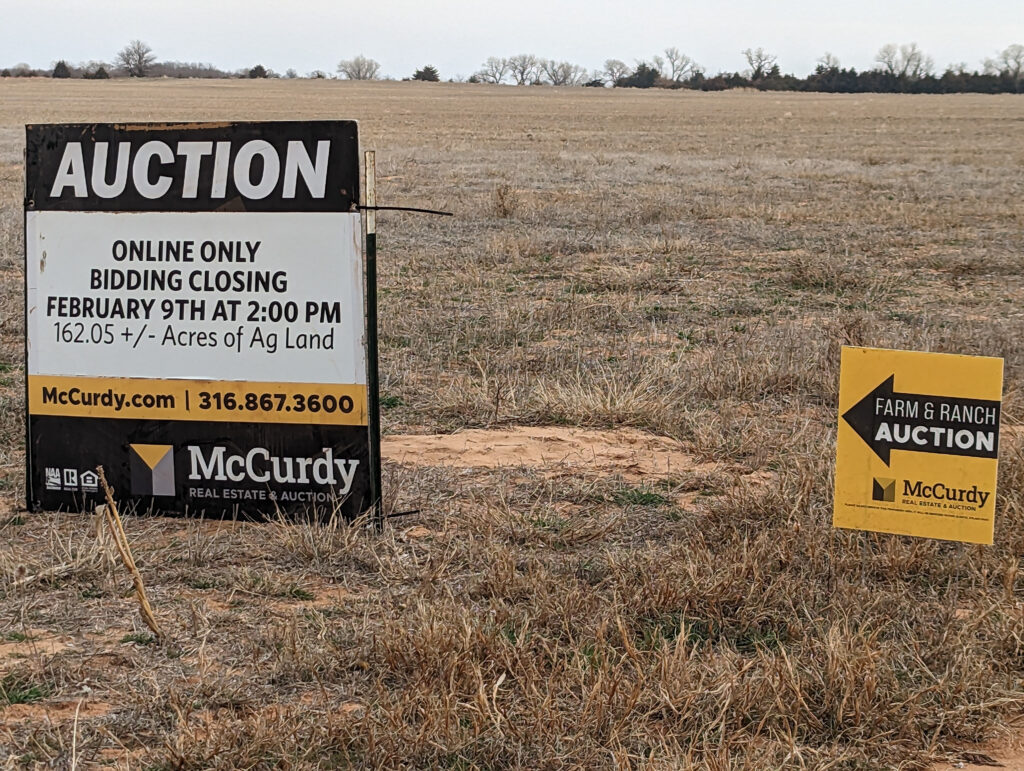
The most depressing thing to happen in 2023 was the sale of the Hoppes place. I don’t know how long our family has been farming it, but I know I don’t remember a time when we weren’t. It sold at auction in March, and I did everything I could to purchase at least the west side that adjoins Mom’s and my ground on two sides. I just couldn’t justify spending more than what the hunters were willing to spend on it so I had to let it go. Luckily, the new owner is willing to allow me to continue to farm the west side in exchange for planting some food plots for deer on the east side of the property, so I consider the outcome to be pretty lucky so far.
Wayne had some extra time in March and was looking for work, so he came to help around the farm, doing soil tests and rebuilding some of the corrals. His help was also crucial during the complete electrical rewire of the original part of the house. When Grandpa built it around 1950, the wiring wasn’t exactly up to today’s code and having seen some of the old cloth-insulated wiring was keeping me up at night. So, with the help of a local contractor, Wayne and I completely replaced all the old wiring in the house.
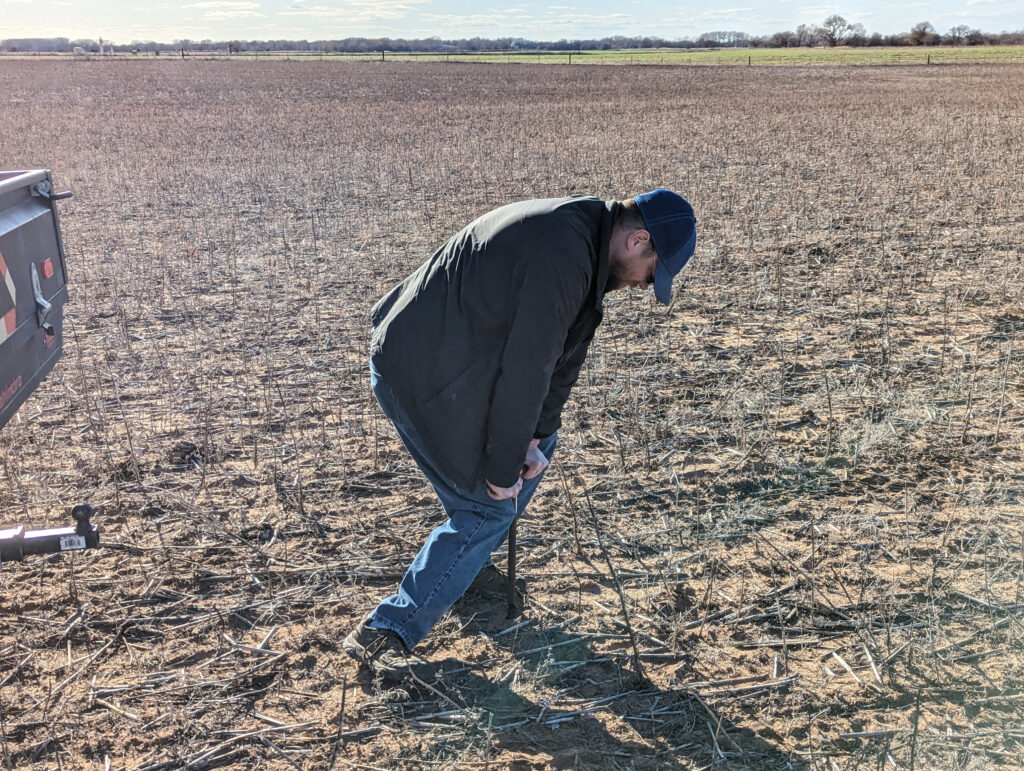
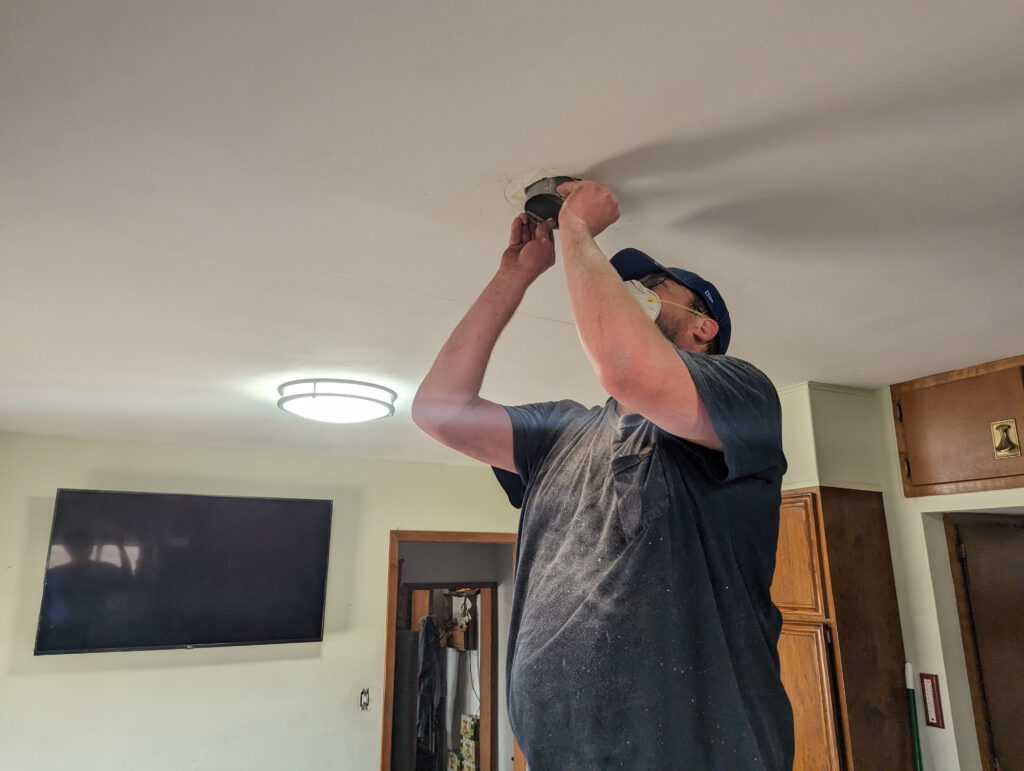

In early May, I started planting more soybeans than we’ve ever had. I didn’t finish until early June. For the last field of beans, planted at home, I had some test plots wherein I compared the standard fertilizer with no fertilizer, with compost extract delivered with the planter in the furrow as well as with compost in-furrow and an additional foliar application of compost extract after the plants were 18-inches tall.

For these tests, Wayne and I constructed a compost extractor, a tender trailer to carry the extract and a homemade boomless sprayer to go on the side-by-side.

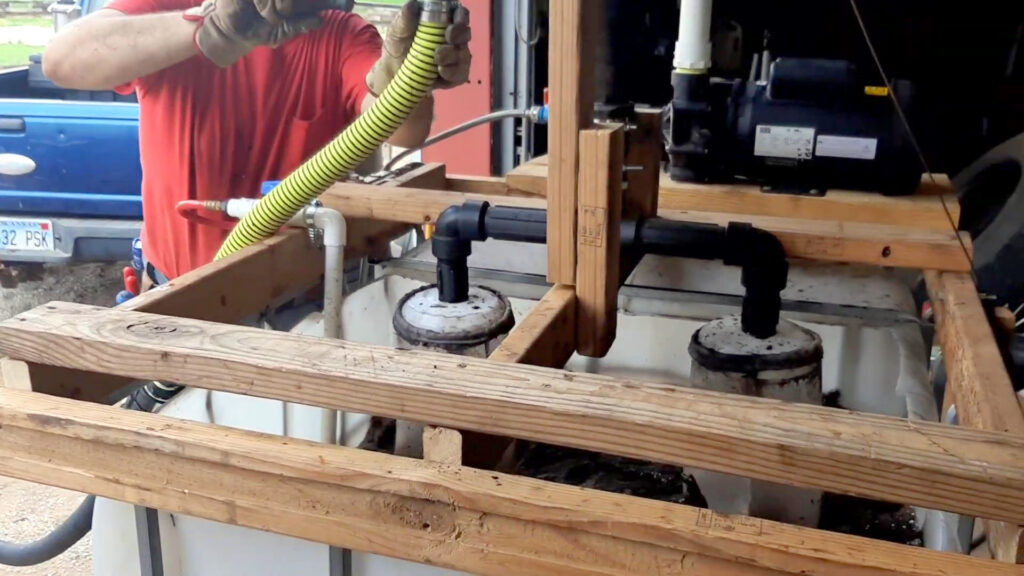
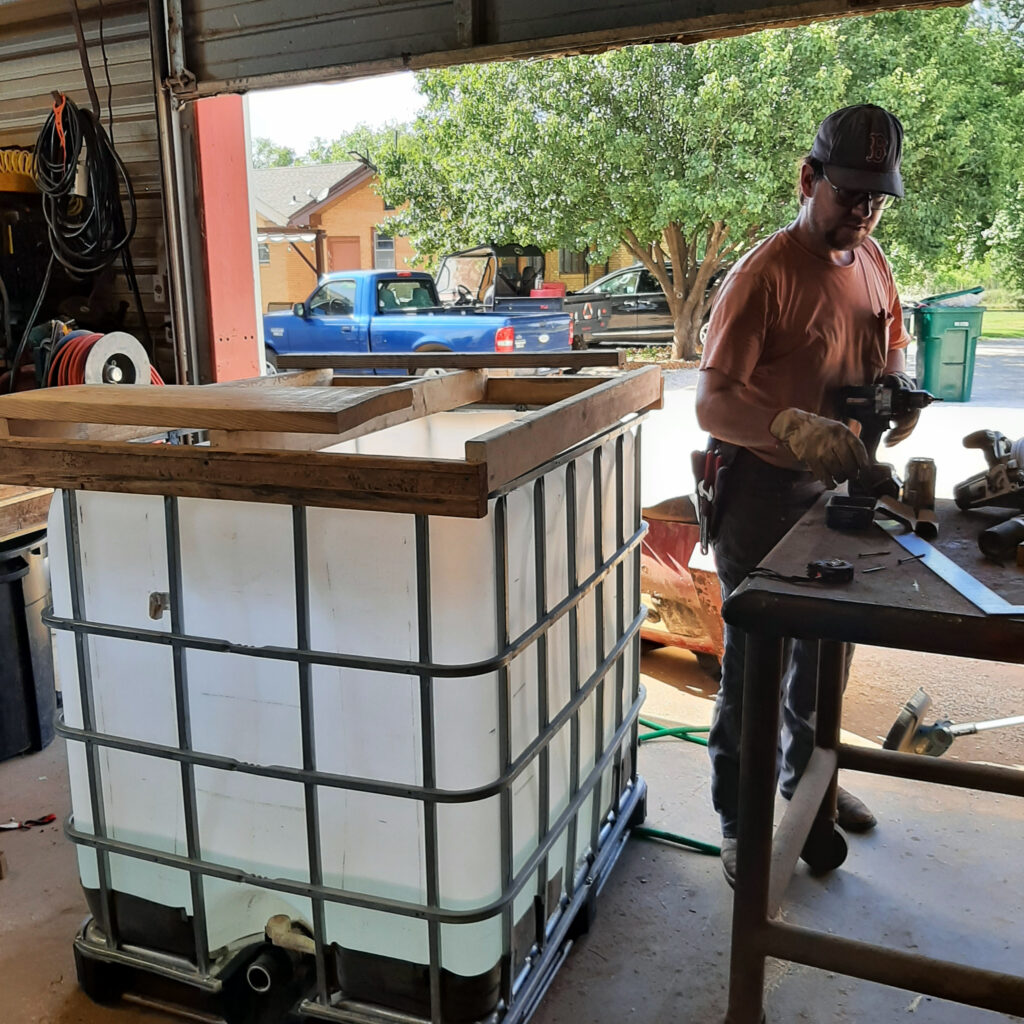

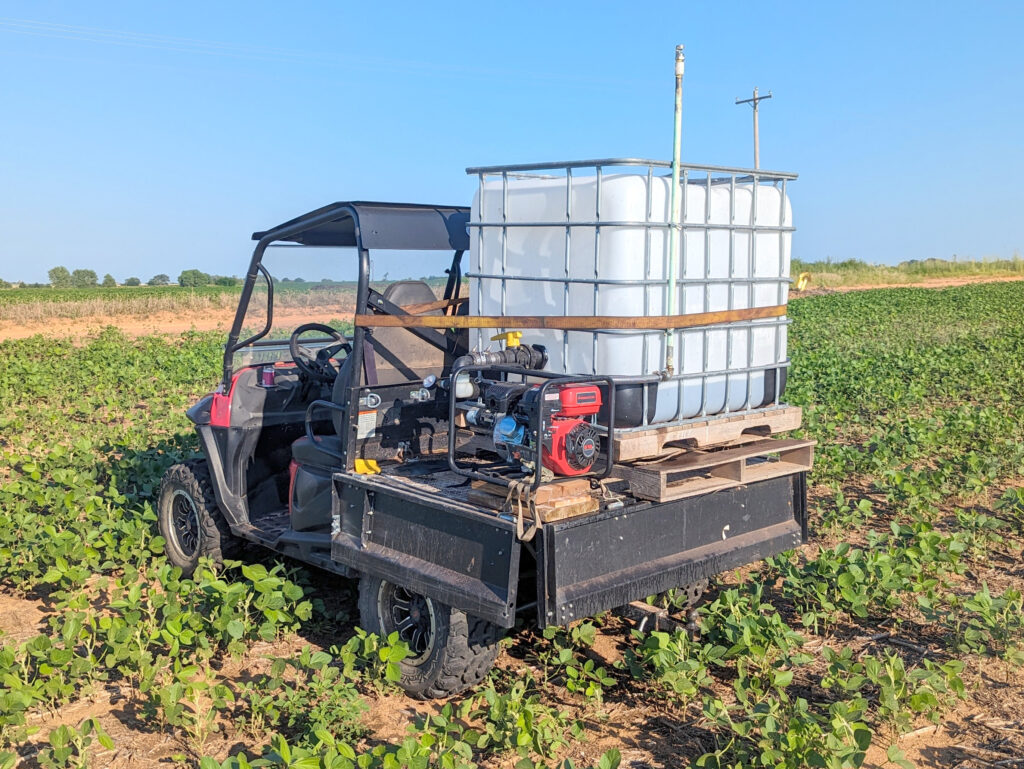
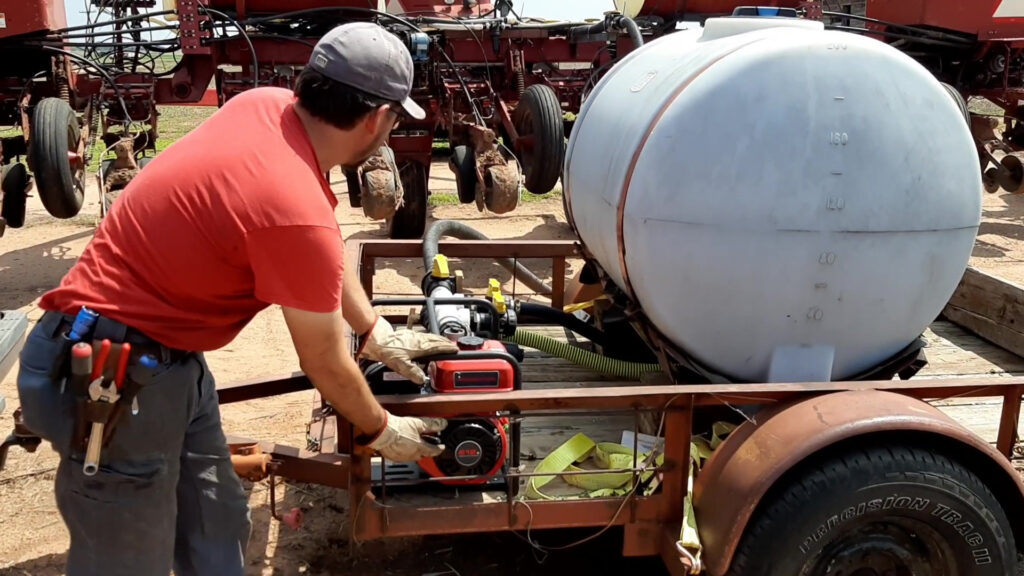
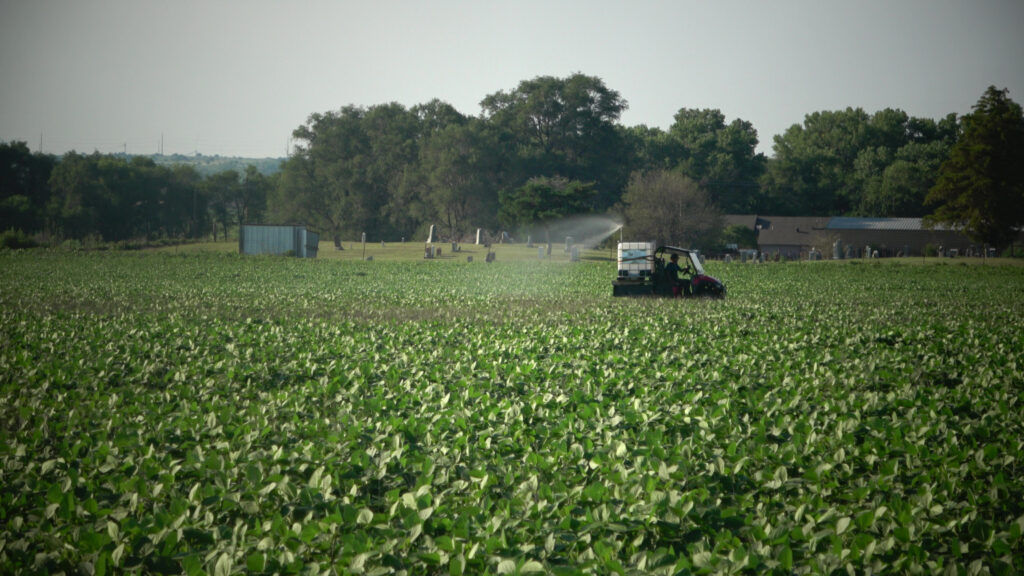
Following the completion of the bean planting, Wayne helped with the construction of another Johnson-Su bioreactor, similar to the one I built in 2022.

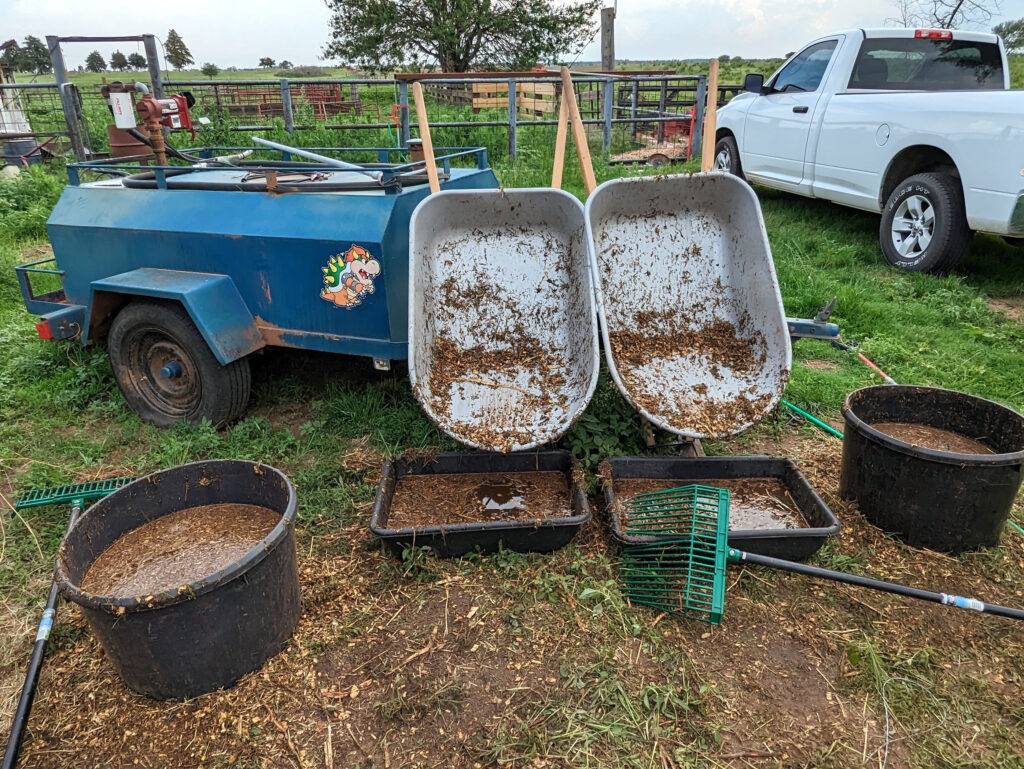
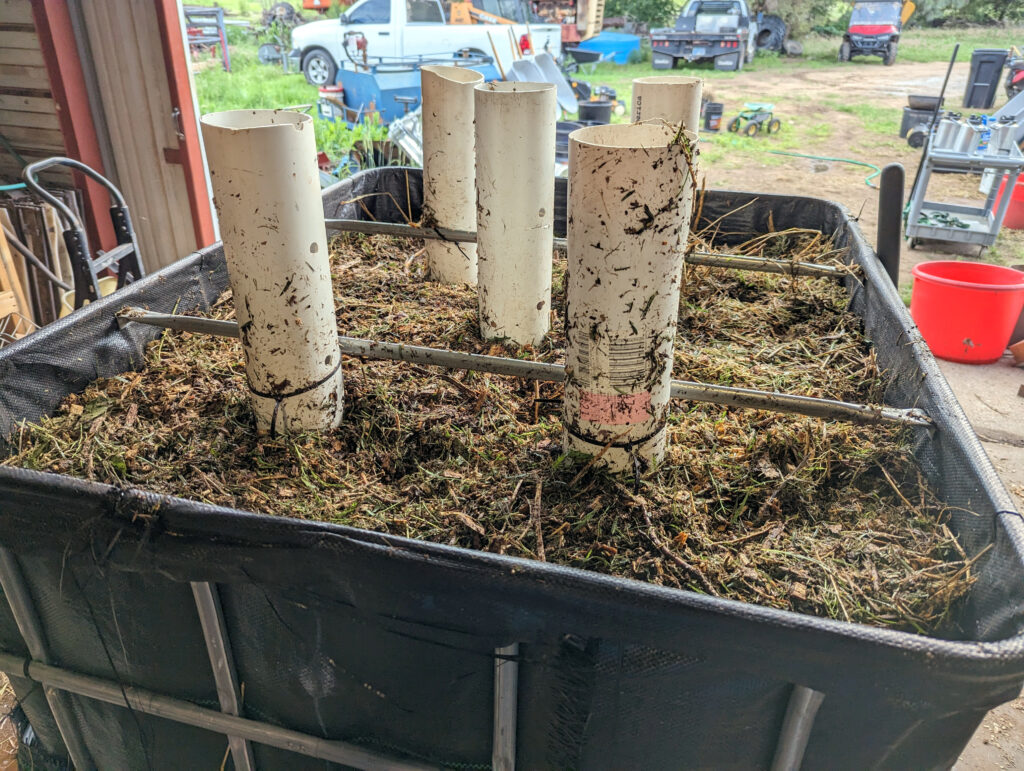
The drought here that started in July of 2022 broke with substantial rains in April. The artesian well which stopped in September 2022 began running again at the end of May. The moisture was great for the soybeans, but it was way too late to save the wheat. This year’s wheat was the worst since the drought of 2013 and 2014. Not only were the yields poor, but the late rains delayed harvest until late June, by which time weeds had begun to take over the short and thin wheat, making harvest especially difficult. Thanks to Wayne’s help, and in spite of multiple tire punctures from antlers, we made short work of the wheat and moved on to planting.
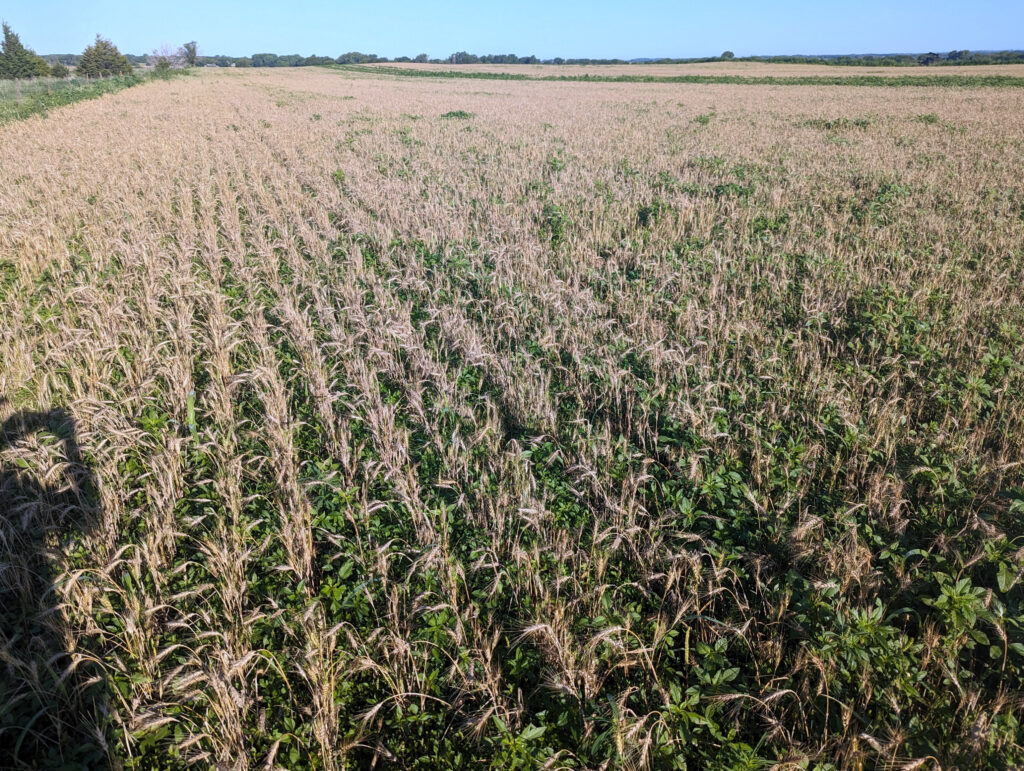

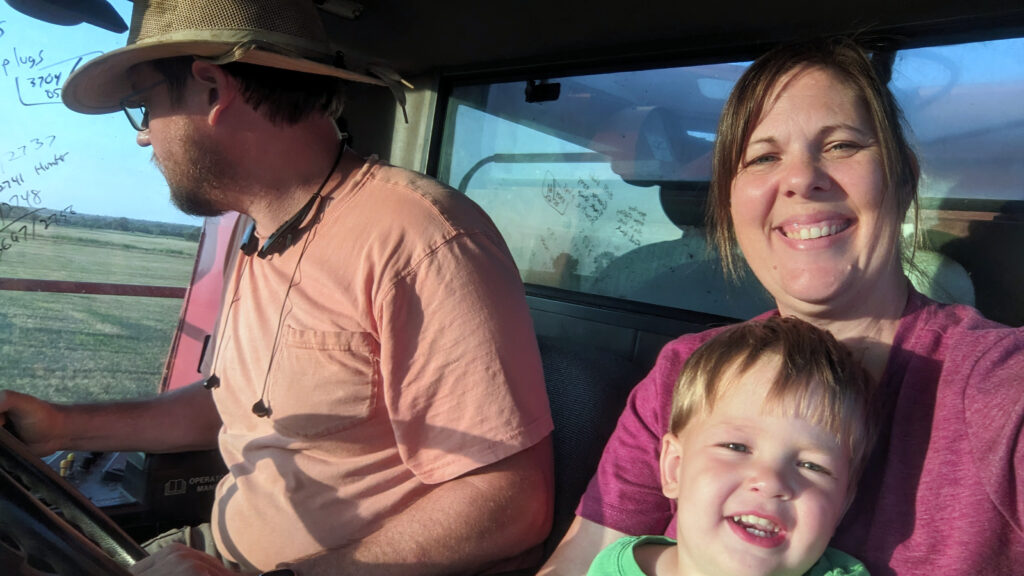
After harvest, I planted the food plots on the Hoppes place and nearly 500 acres of double-crop milo after wheat. We continued to have good moisture and the milo took off.
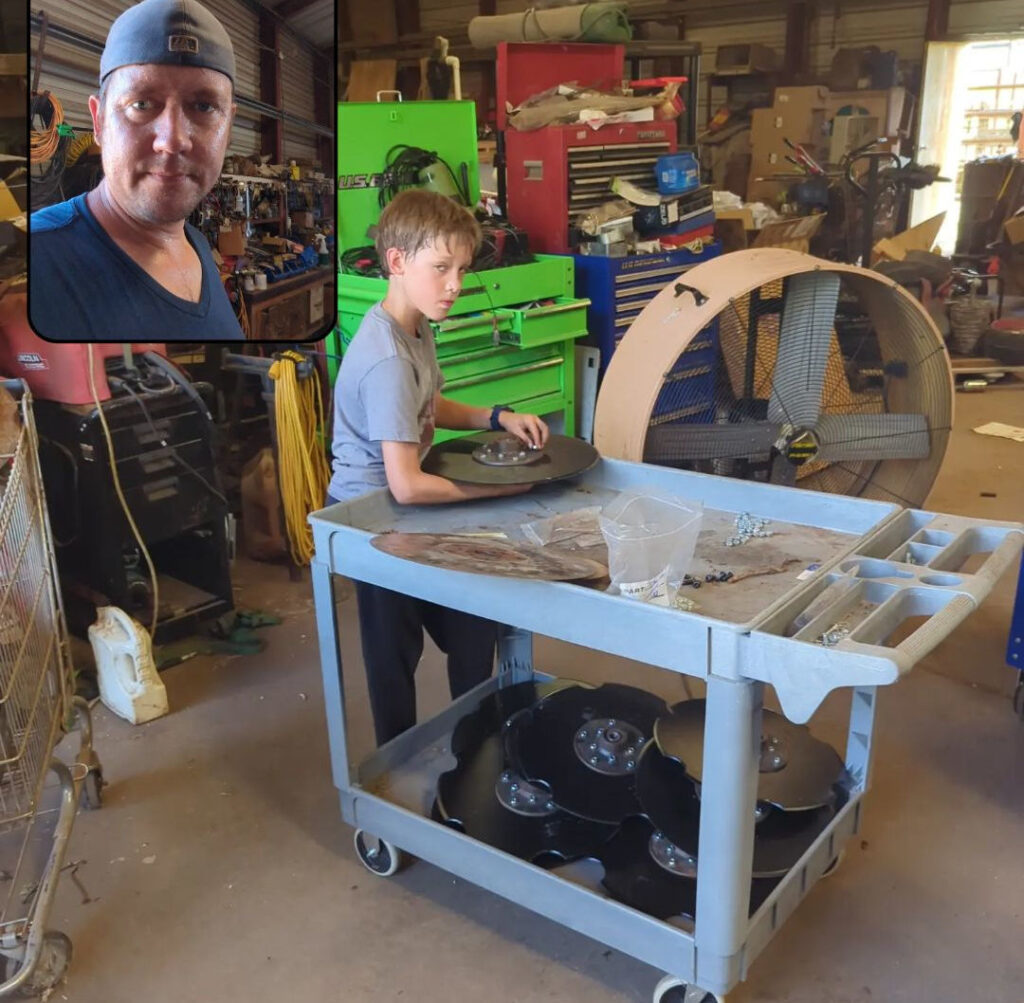
I had some leftover compost from my trials, and a friend asked if I’d plant a couple hundred acres of triticale for him using the compost extract to help build his biology. Nolan helped me install new discs on the drill, but he wasn’t happy about it!
Soybean harvest started a little later than I’d hoped. The beans were so wet that the COOP wouldn’t take them one day and only a couple days later they were so dry I was scrambling to get them before they fell on the ground. As Wayne had started a new job, my brother-in-law Luke VanSkike came down for a week to run the other combine. When he left, I was back to pushing one combine as fast as possible to try to stay ahead of the beans.

Disappointingly, my compost trials on the beans on the home place were a bust. The beans were fine, but my test plots were so large that the differences in soil and drainage caused a bigger variation in the yields than the constructed variables. But I learned a lot and will run similar tests next year with better methods.

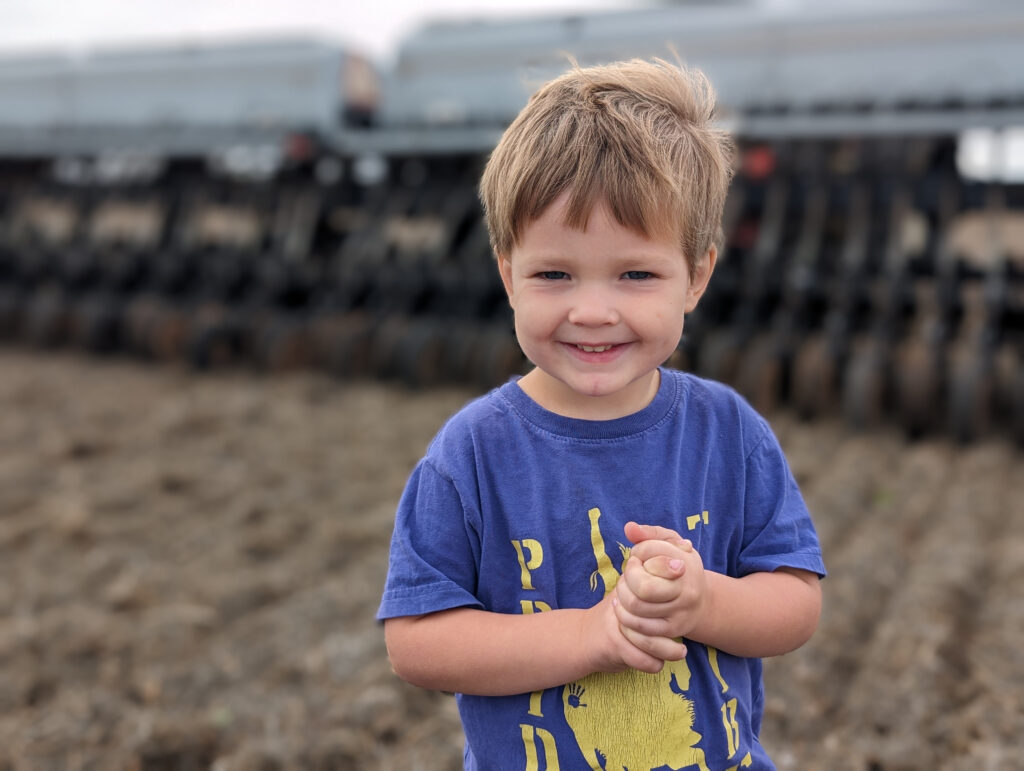
Once I wrapped beans, I immediately turned to planting wheat. After the challenges with getting the right compost volume on the triticale project, I decided to install a new fertilizer controller on my drill. It took several different configurations of pumps and plumbing and filters, but I finally got it dialed in and love the new Spray Mate system.
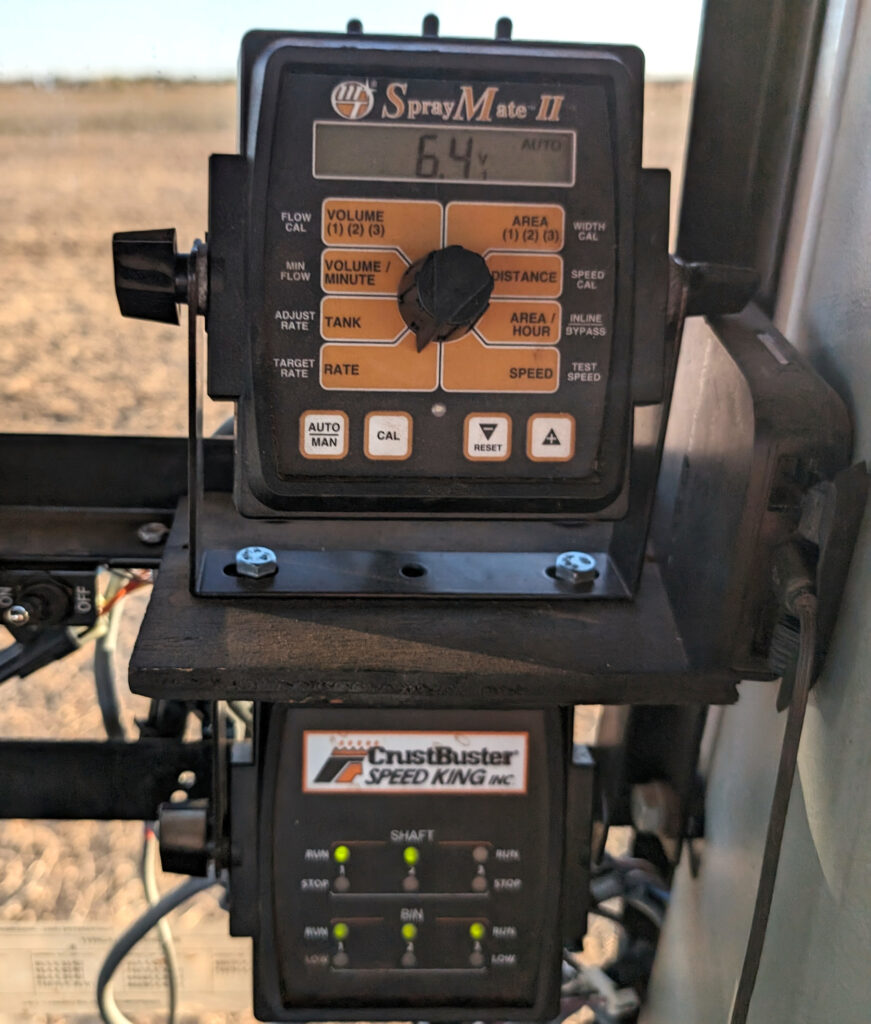
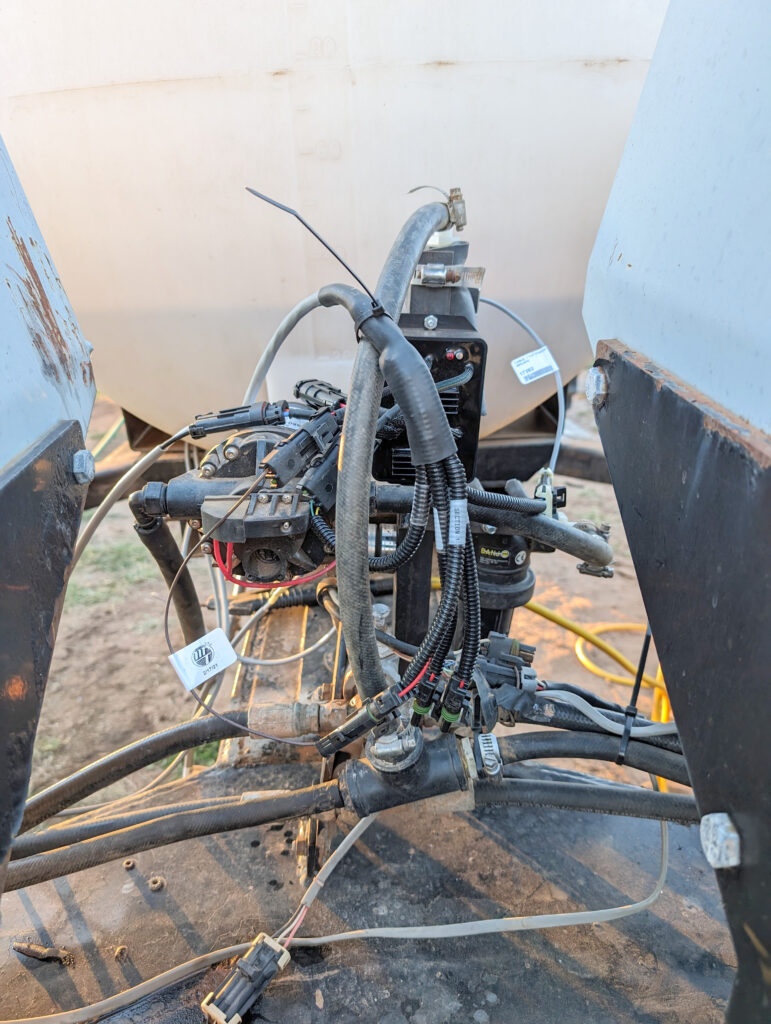
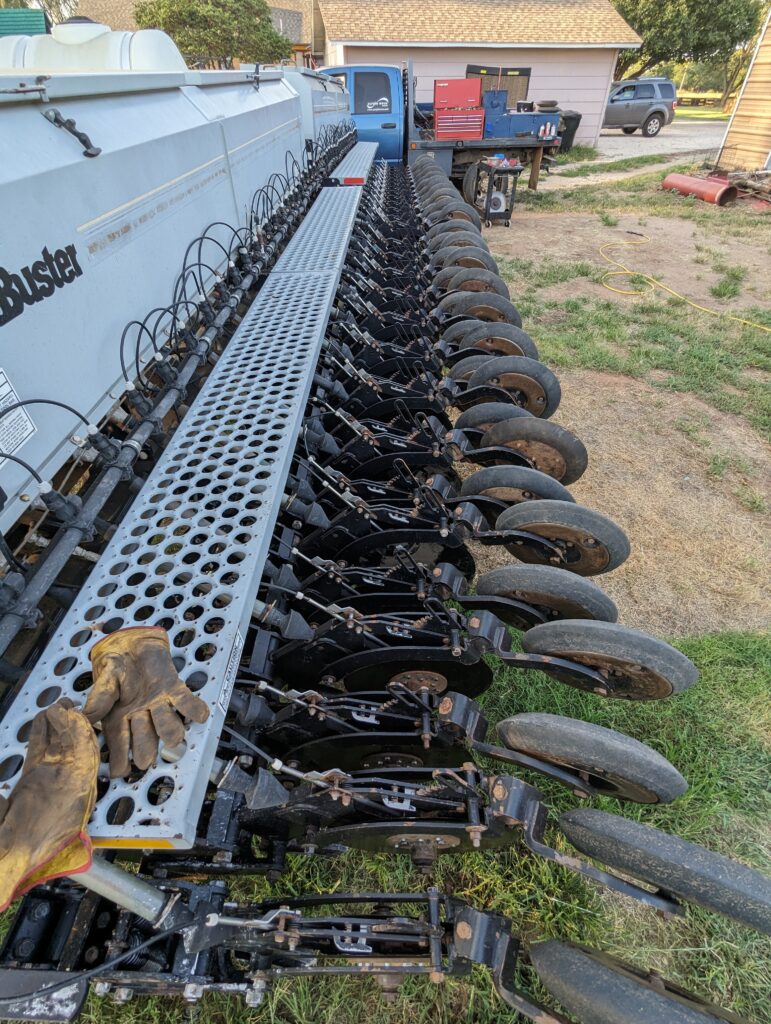
As the temperatures turned colder, I was faced with finding a solution to keep my two Johnson-Su bioreactors from freezing. Last year involved heat lamps and heat tape and I’m still not sure I was successful keeping the one warm in the cold shop. With two reactors now, I needed a better solution. I found an insulated enclosed trailer on Purple Wave that fit the bill perfectly. With a heat lamp on a temperature sensor, the electricity cost is substantially less to keep it above freezing.
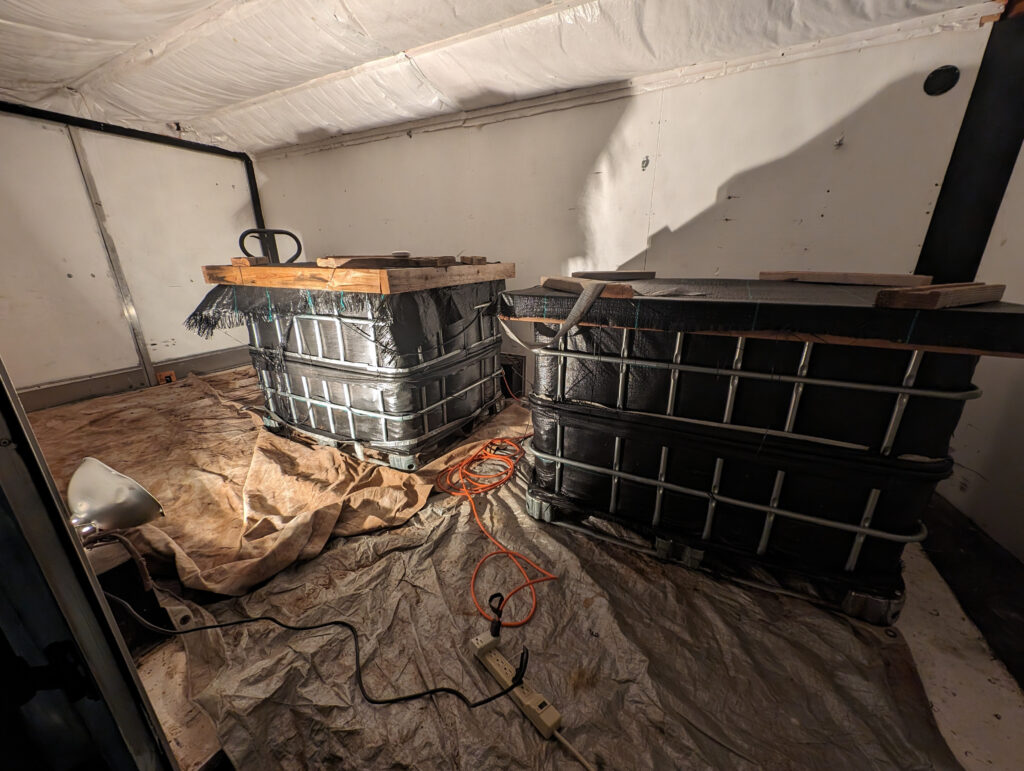
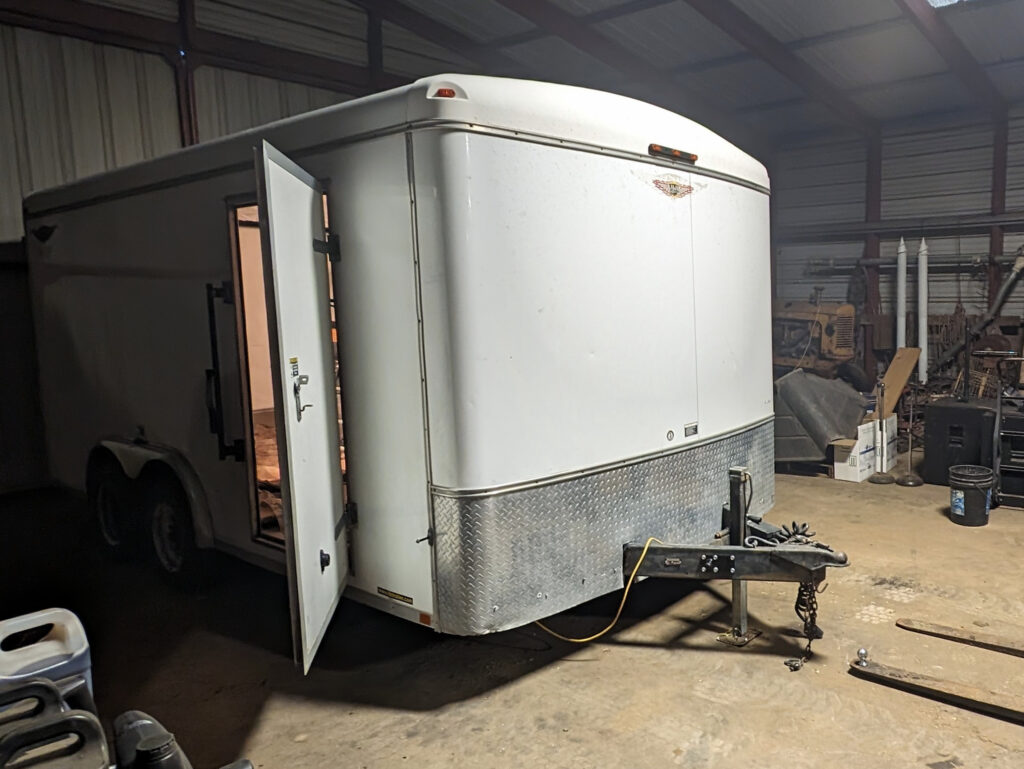
Milo harvest was relatively uneventful. The crop started extremely poor, but had a couple great fields in the middle. The last field was so late that it was flat on the ground by the time I got to it to pick up as much as I could.
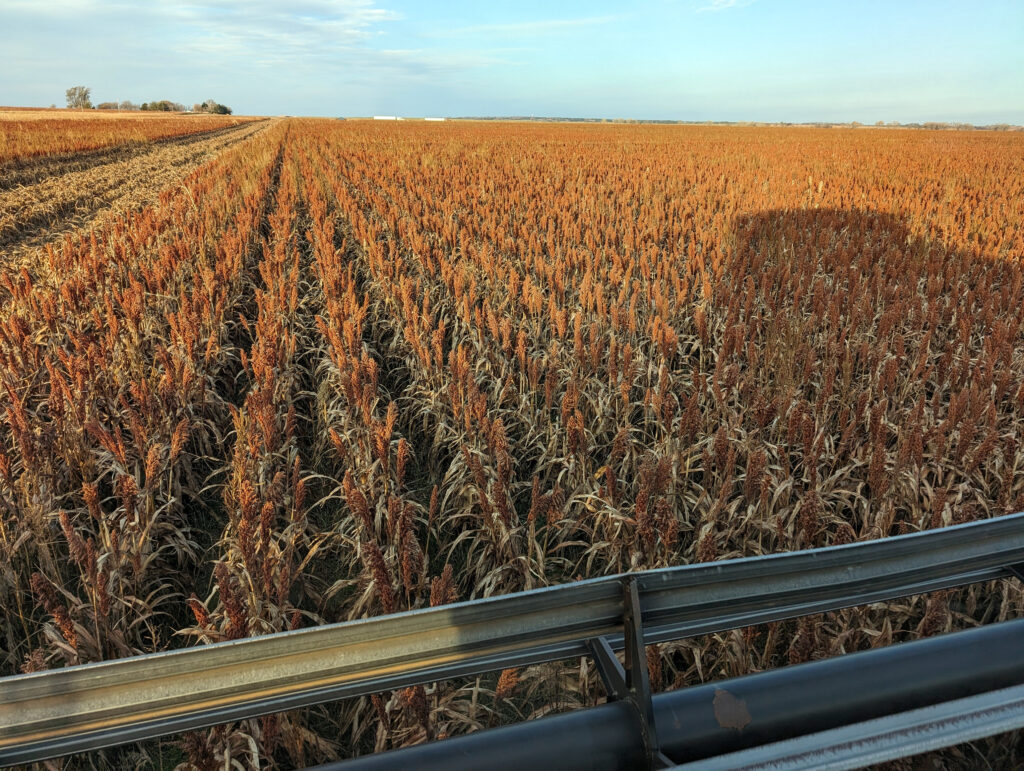
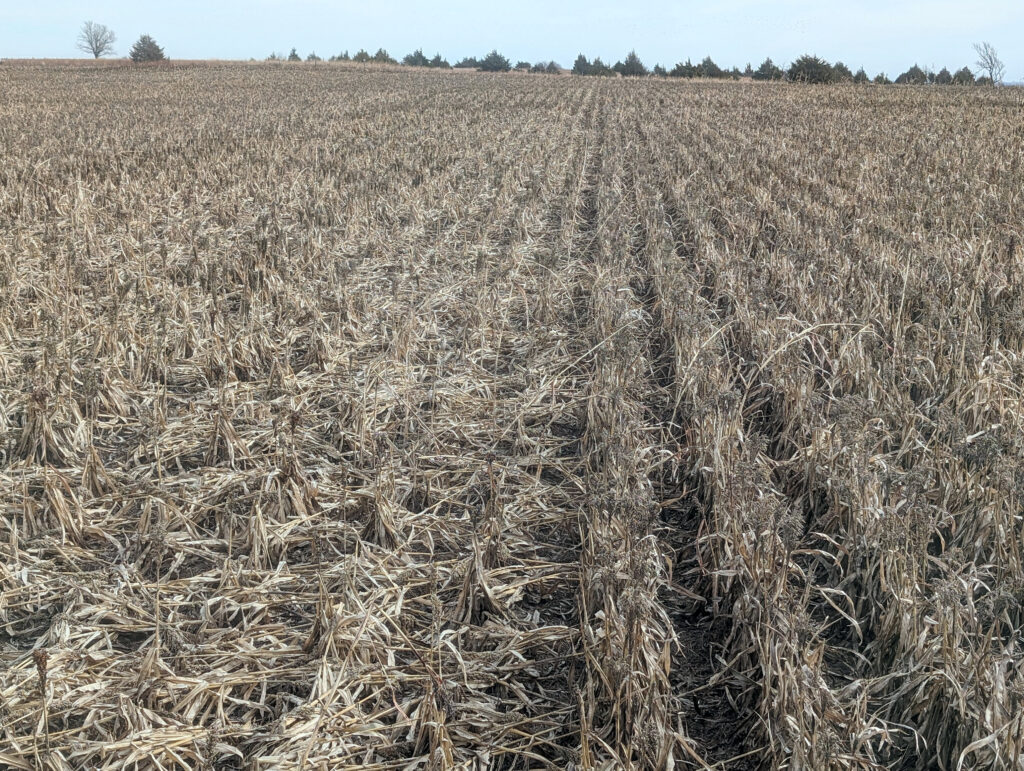
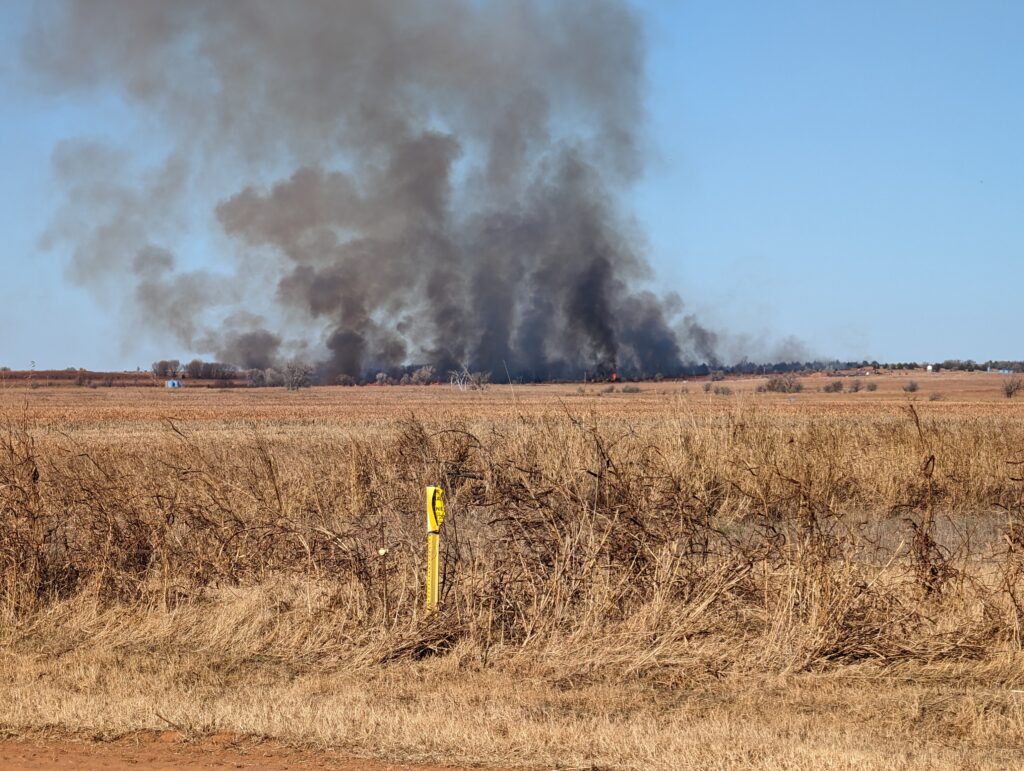
On November 17, as I was cutting milo on the Hunter place, the Nesselrode 80 caught fire. We believe it was from one of the hunters who was checking a deer feeder. It burned a little of the Nesselrode, but most of the damage was on the neighbors’ fields to the south.
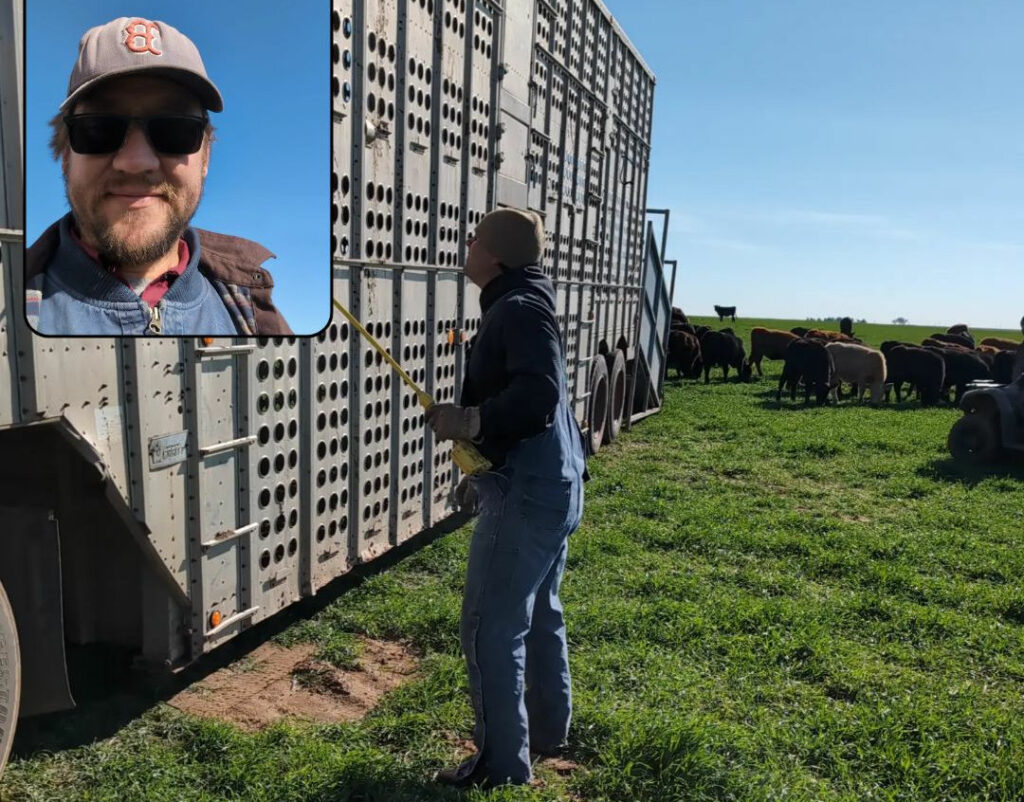
The late rains brought late grass, so we were late stocking the pastures with cattle. They spent the summer on grass and we finally turned them out on wheat pasture in Oklahoma in late November.
The most exciting happening of 2023 came in the final few days of the year. I’d decided earlier in the year, as it took me an entire month to cut my soybeans, that I needed to upgrade combines to something that could get over the ground faster. With Wayne no longer available to come help during harvest, I need one really good combine instead of two okay combines. I found what should be a really nice 7130 at an auction in December and am excited to use it in 2024!

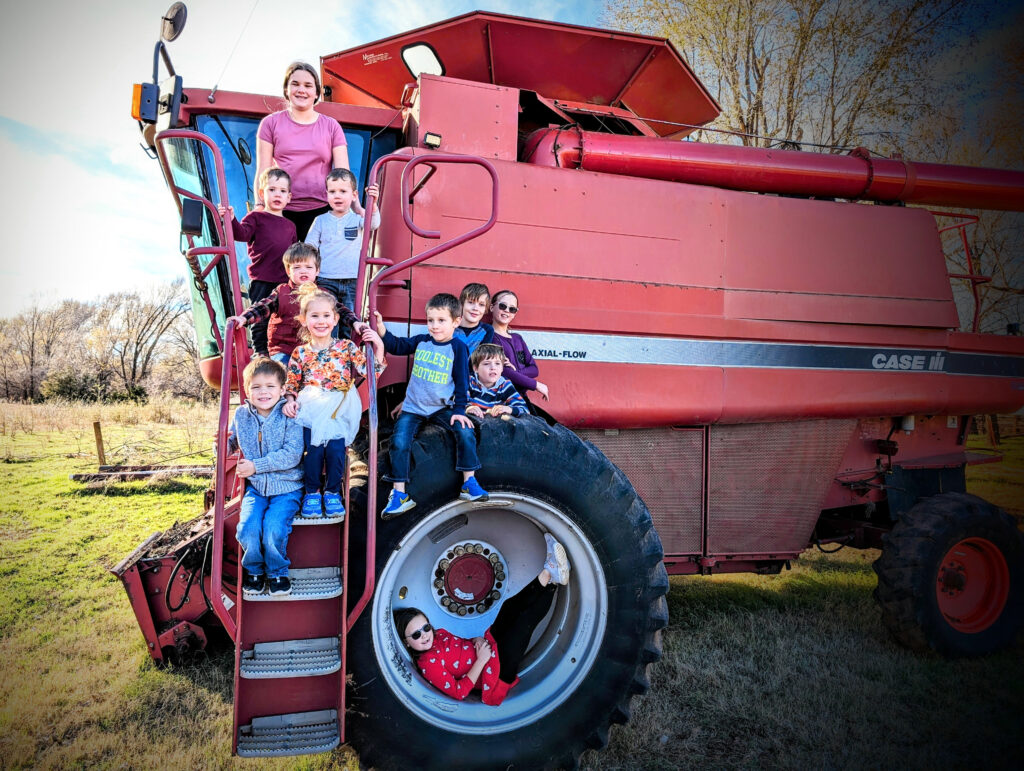
2022 on the farm
2022 was a good year. It wasn’t great, thanks to the crippling drought that began on July 1 and persists to this day, but natural disasters notwithstanding, it was a good year in which there was much to be thankful for.


In the summer of 2021 it was all I could do to finish planting with my planter — the last couple hundred acres found me leveraging tire tubes and ratchet straps to hold the air pressure in the seed boxes, so while I was white-knuckle hoping it didn’t explode I ordered another planter.
The new planter is a 25-year-old 16-row, which was an upgrade from my 30-year-old 12-row. It took a lot of work and some help from Wayne and a hired bead-runner for some welds that were above my skill level, but we got it working in time to start planting beans in April. We also installed an electronic flow monitor for liquid fertilizer, allowing me to see any flow restrictions at the row level from a tablet in the cab. I kept planting soybeans until the wheat was ready to cut, including enough custom soybean acres for neighbors to pay for the planter this first year.

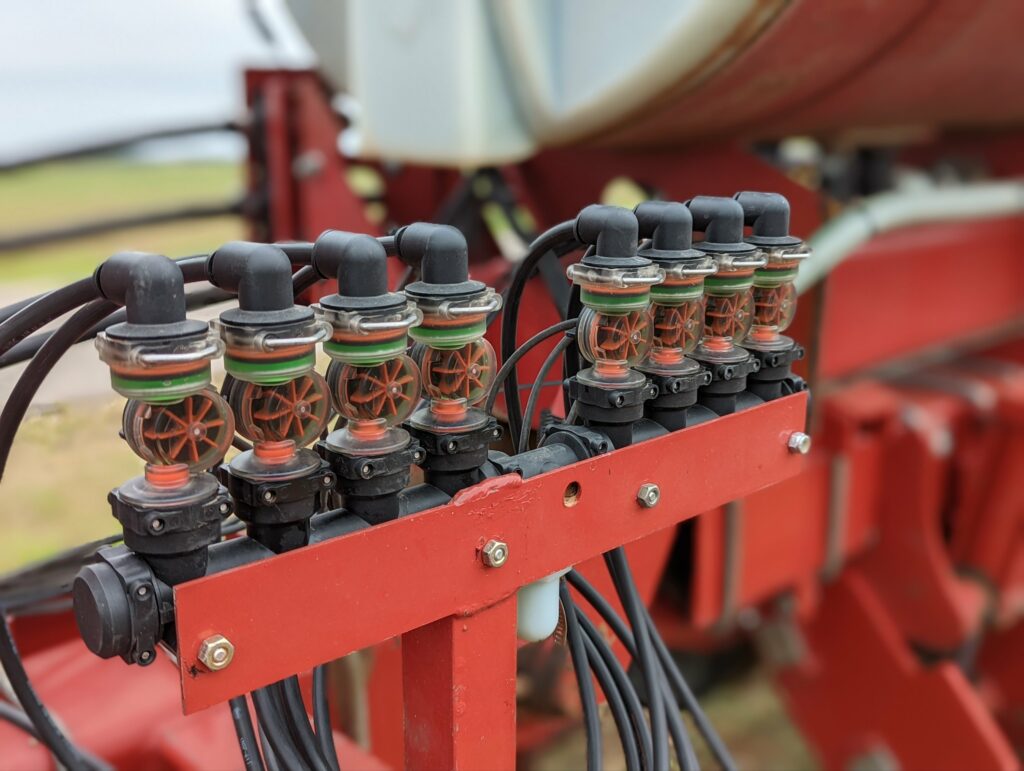

Wheat harvest was relatively uneventful, though we’re still running only one combine due to a supply chain backlog that has yet to produce a replacement rotor for the old machine. It was the first year using FarmTRX, a third-party yield monitor with GPS that produces really nice yield maps. While the wheat looked the best I ever remember seeing in March, yields turned out just average because it didn’t rain much in April. With Wayne’s help we knocked out around 600 acres of wheat in 8 days. We’d have done it in 6.5 if it weren’t for a broken rotor gearbox mount that took us an entire day to fix.
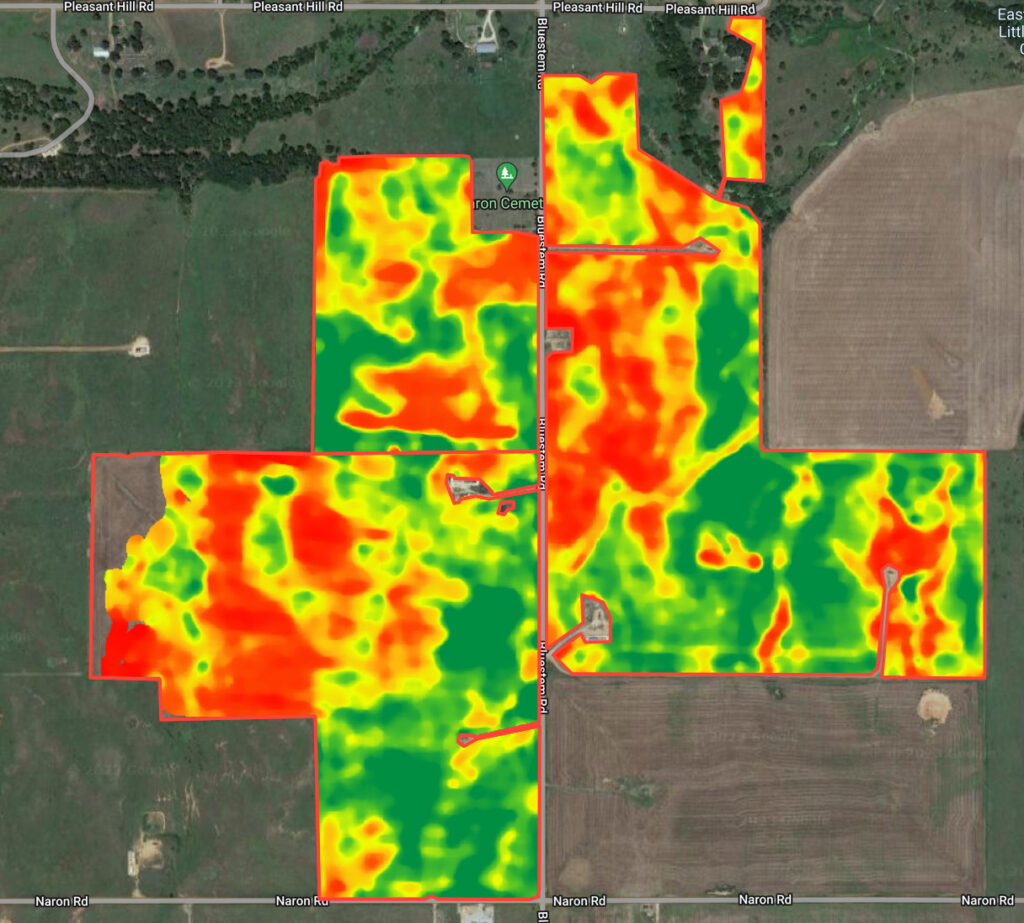
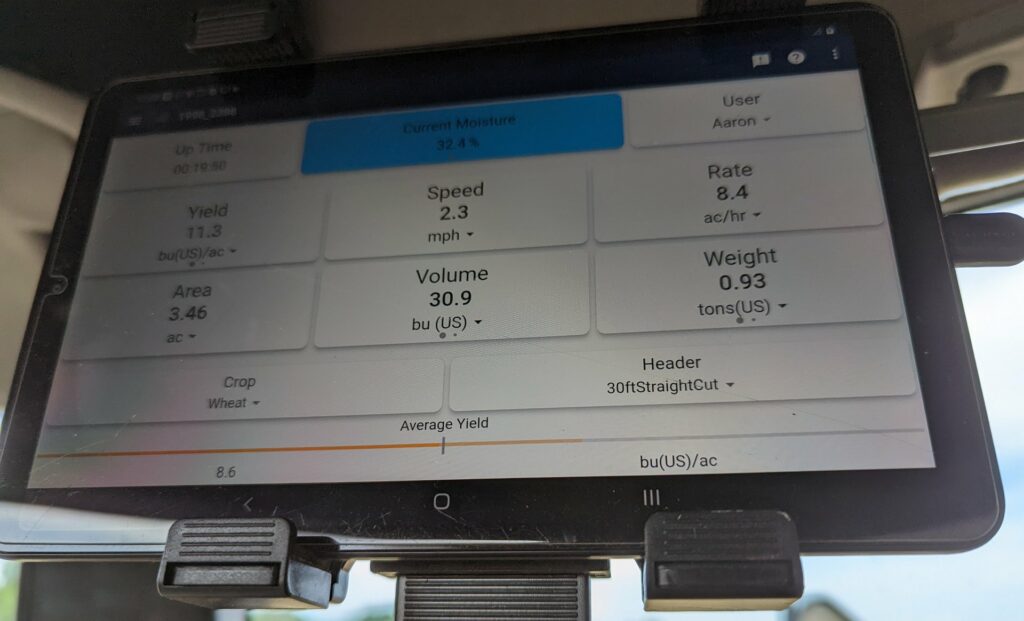
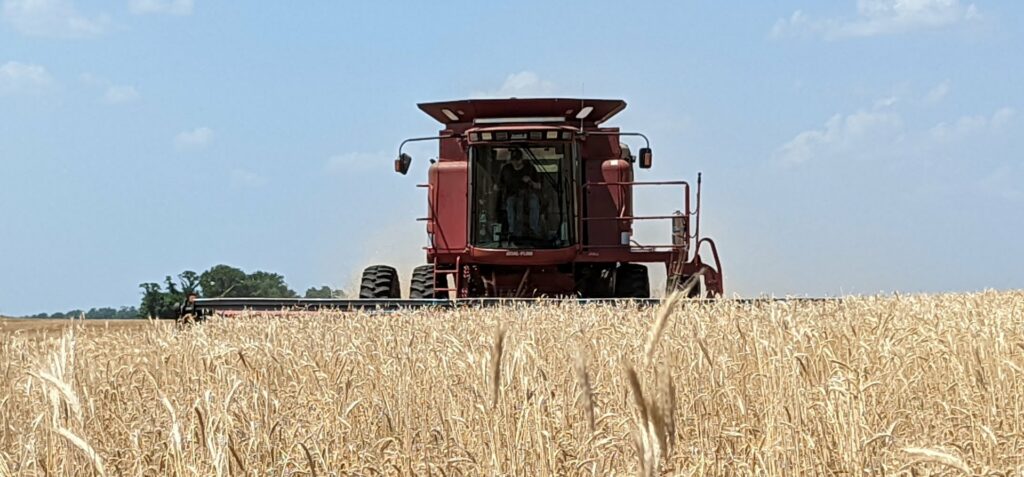
After harvest, it kept raining so I kept planting double-crop milo on nearly all the wheat acres we’d just cut as well as several hundred acres of milo and feed for neighbors.

As soon as I finished and put the planter away, the rain stopped. It didn’t rain much at all from the first week in July until harvest. My weather station on the roof at the farmhouse logged just over an inch total from August through October, and most of that came in little showers that barely wet the ground much less soaked in to be agronomically useful.
The artesian well by the house has only stopped twice in my memory. The first time it stopped was when I first started farming in the drought of 2013-2014 and the second time was on September 15 of this year. It’s still completely dry.
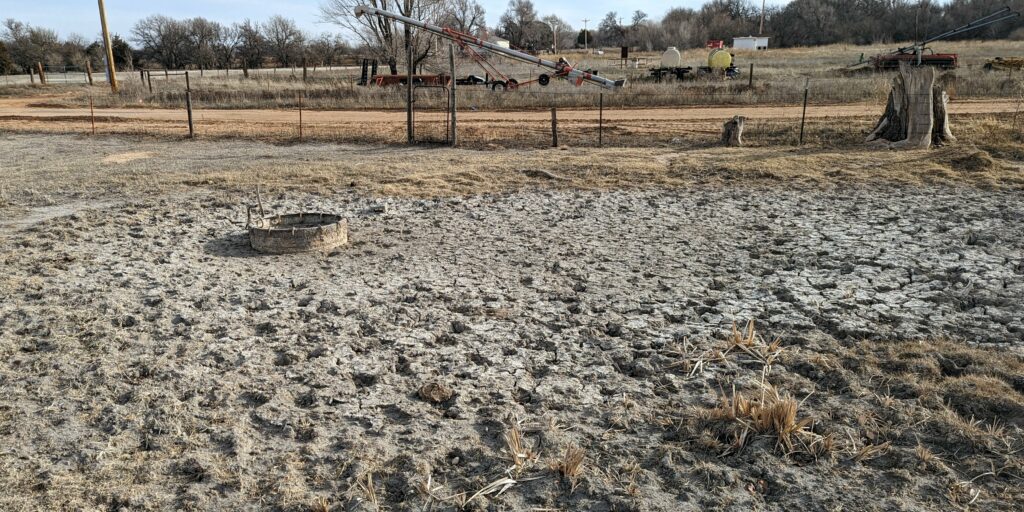
Fall harvest went well, though the yields were understandably disappointing. Not a single soybean field performed well enough to evade the insurance claim. Sadly, double-crop milo is not insurable in this part of the state, so the milo project was a fairly severe money loser this year. The FarmTRX worked well on the one combine for wheat harvest, so we put a second one on the other machine. Since the rotor doesn’t shake at the slow speeds of fall harvest, and since Wayne is becoming a very good combine operator, we were able to run two combines for pretty much all of the 1400+ acres of soybeans and milo. We were finished by the first week of November, since it didn’t rain to slow our progress, which is a far cry from the December 1 finish in 2021.
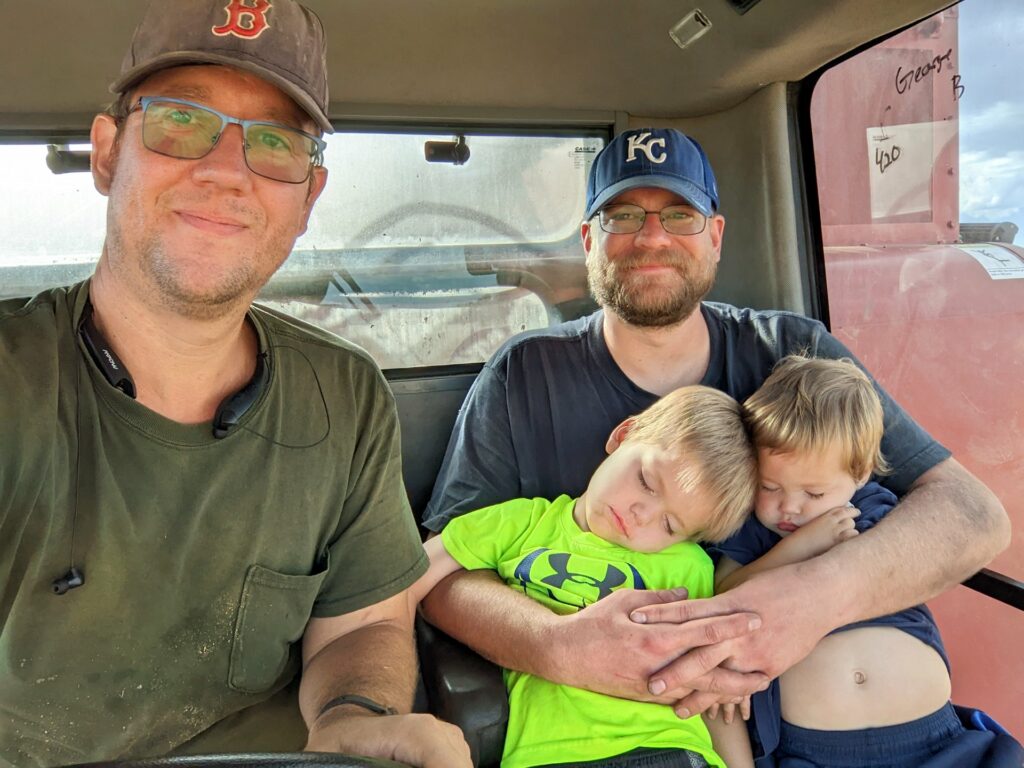
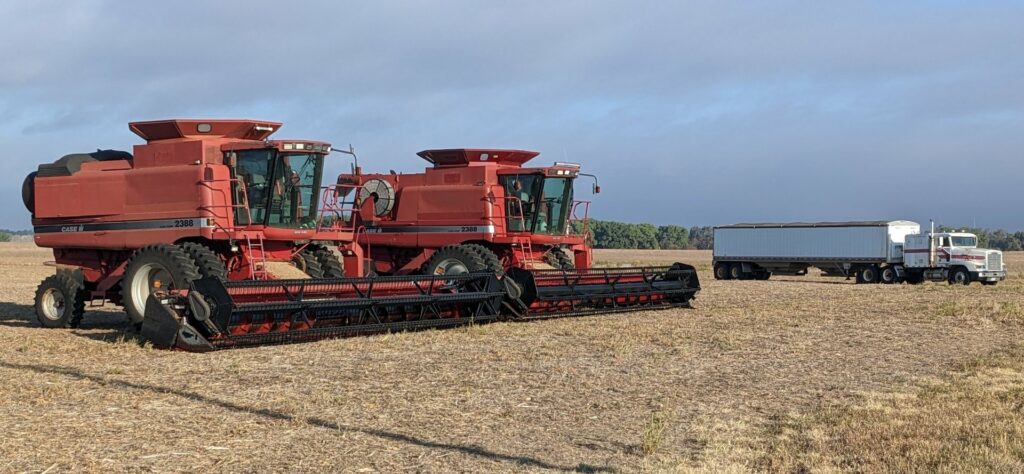
We did have a small scare during fall harvest as Wayne and I were cutting on the Hunter place. We started noticing smoke that looked disturbingly close to the home place. I ended up parking the combine and running home to double check and found a fire in the process of taking out some of our soybeans and the western half of the Cox pasture. It was started by a neighbor who was swathing pasture and quickly spread to our fields. The local fire department put it out as quickly and efficiently as they always do, but not before it took about 10 acres of beans and 30 acres of pasture.
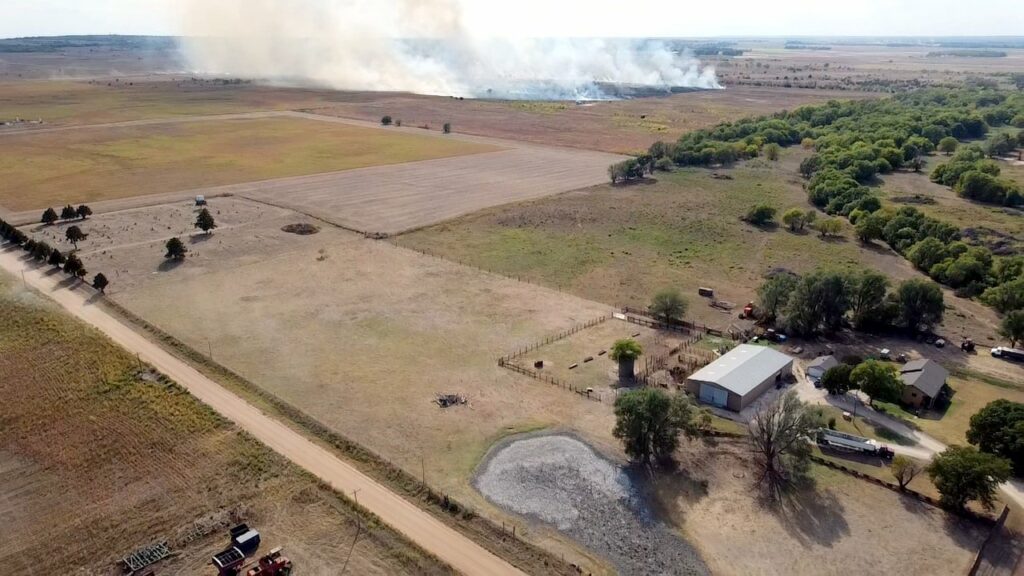
Normally this time of year we have a couple hundred steers on wheat pasture in Oklahoma. However, because it’s been so extremely dry there really isn’t much in the way of wheat anywhere around that’s good enough to graze. We sold all our stockers in August as planned, but we have yet to restock. We’ll be looking at hopefully buying once we start to see pasture green-up. Hopefully by then I’ll have an opportunity to install the new (to me) hydraulic chute in the corrals that I purchased a year ago.

With a little free time at the end of the year thanks to an early completion to harvest, I went down the rabbit hole of building a Johnson-Su Bioreactor. In a nutshell, research from a molecular biologist from New Mexico State University has shown some soil health and nutrient absorption benefits from the introduction of fungus to cropland. The bioreactor I built will compost the wood chips, leaves and straw for a year and produce a fungally-dominant compost from which I’ll make an extract and apply it in addition to or in place of fertilizer. I’m not sure how much I believe everything that’s been said about it, but it’s at least worth a few small trials. If half of what they say is true, it might lead to a drastic reduction in the amount of synthetic fertilizer I apply to each crop.
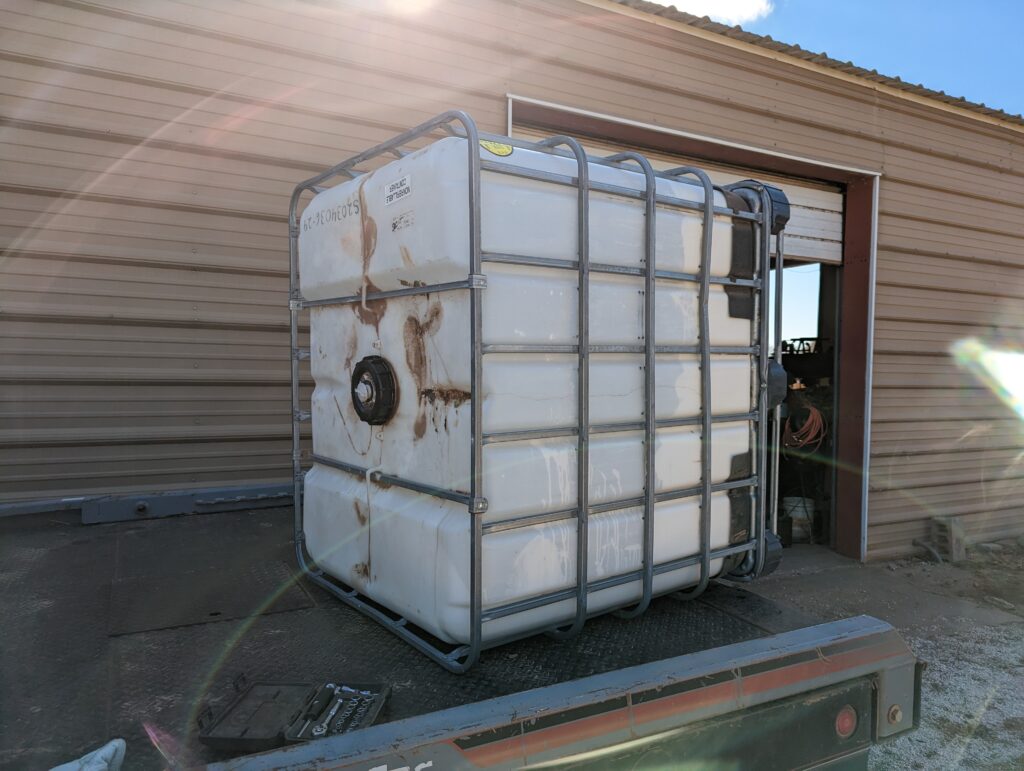
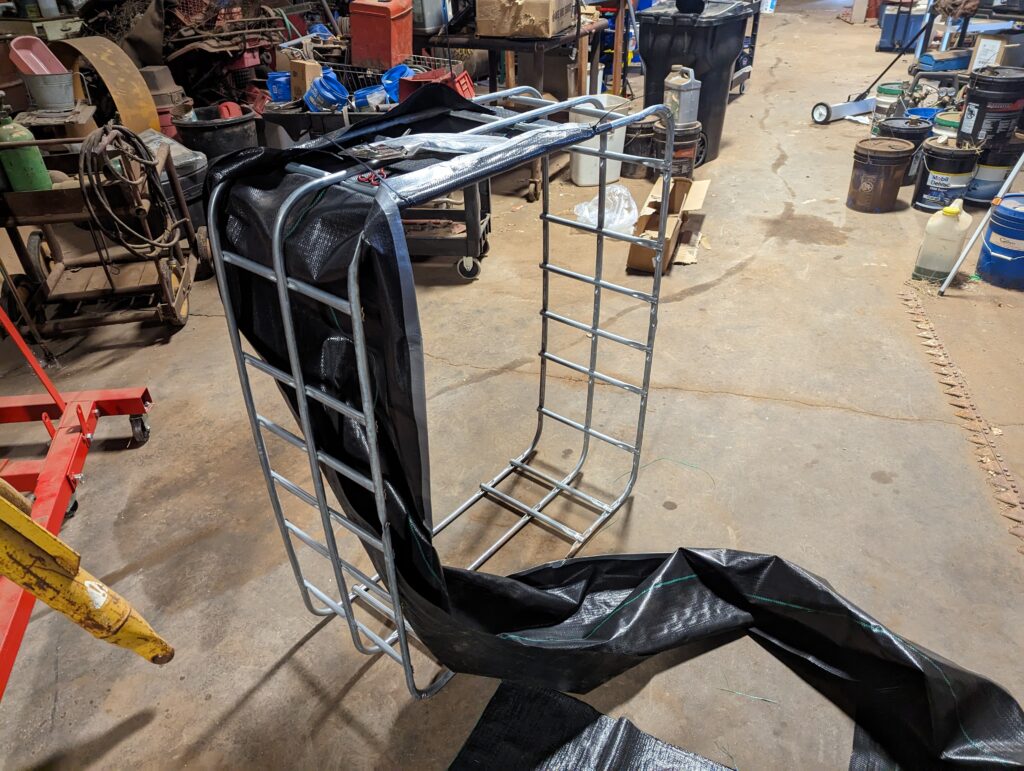

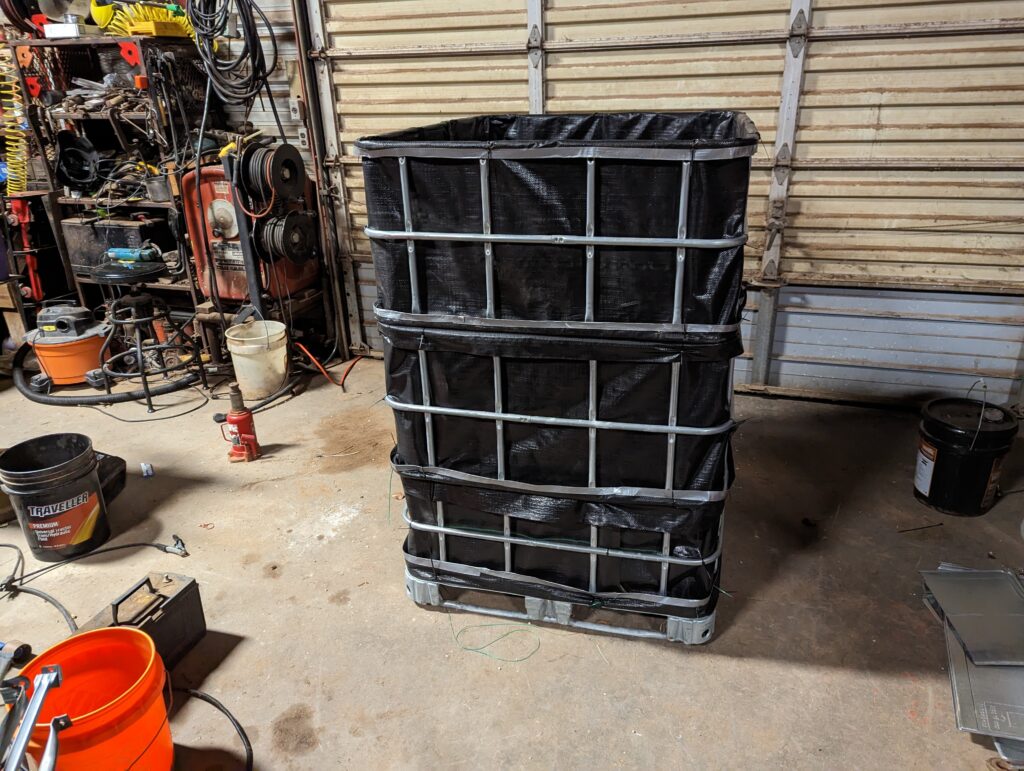
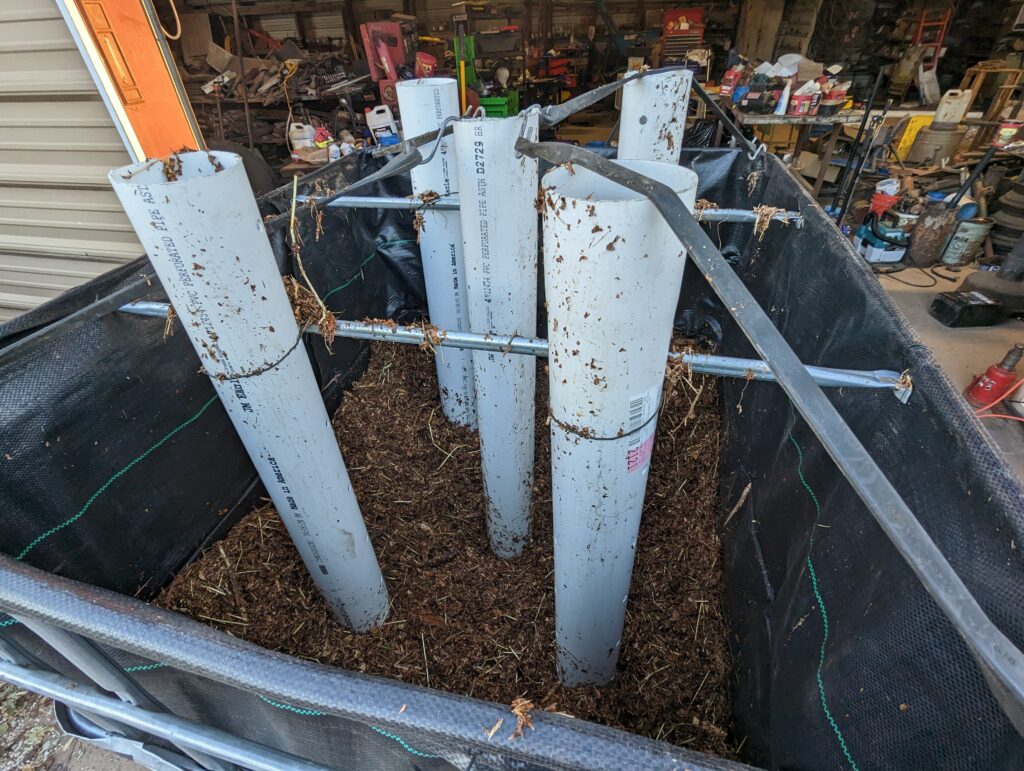
Lastly, I got an unexpected call from NRCS in December. I was told that the county conservation board had elected me to be the 2022 winner of the Kansas Bankers Association Conservation Award. I was told it was for the work I’d done between 2015 and 2021 to convert the farm from conventional tillage monocropping to no-till practices with crop rotation and cover crops. I honestly don’t know much about the award, which will be presented at a banquet later this month, but I’m just hoping I get a certificate that I can hang on the wall alongside the one Grandpa won in 1989.

Review of the Wilger Electronic Flow Monitor system
I recently purchased a new-to-me Case IH 955 planter. The liquid fertilizer set-up on it was completely trashed, with the exception of the tanks and the pump, so I needed flow dividers. I wasn’t happy with the round, silver Jon Blue divider that was on my 12-row, and whether I got two 12-outlet dividers or a single 20-outlet model, it looked like I would be well north of $1000 to handle my 16 rows. That still wouldn’t give me any way to monitor the overall flow rate much less indicate a restriction or break in any individual row line.

A little ducking found me looking at the Wilger EFM system. It monitors individual flow for each row digitally, and connects by Wi-Fi to an Android tablet, saving me from having to mount yet another single use display in favor of my “wallpaper all the surfaces with pixels” mantra.
The only place I could find to sell me one online without a phone call was Dultmer Sales in Nebraska, though before I was done with everything I had probably 30 minutes of phone time burnt up with them.
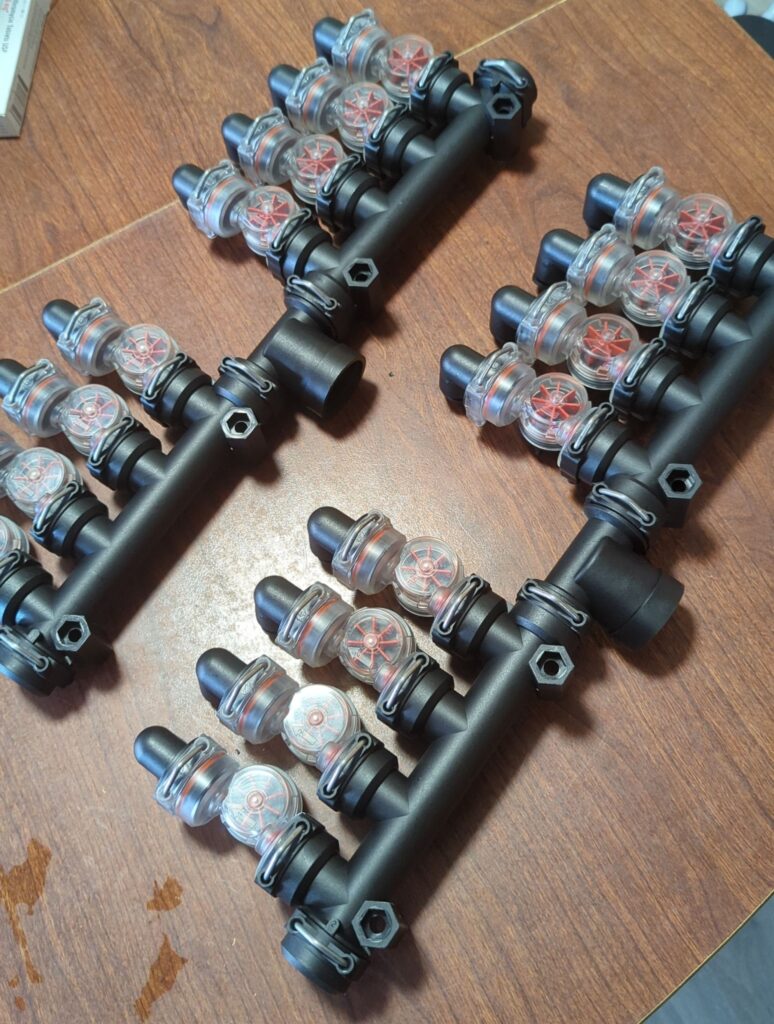
Assembly was straightforward and I had it running in no time at all. My only complaint lies in the roughness of the Android app itself. The layout is pretty awful by anything close to modern design standards. For some reason, it is set to always show three products and 24 rows. It would be much more useful and easier to use if it used all of the screen to show only what was configured. In other words, for me it should only show one product and 16 rows – the balls could move much higher and lower giving a greater degree of precision to the individual flow rates.

It also seems to have a relatively slow refresh rate. I’m not sure if that’s an issue with the app or with the sensors, but I wish it would update multiple times per second instead of once every second or every few seconds. Here’s a short video showing how it works on a turn demonstrating the slow refresh rate.
Is the system worth $3500? Probably, especially in a year like this when knowing how much fertilizer you’re applying makes a big difference at these fertilizer prices. Is the roughly $2000 difference worth it compared to what I was going to spend on only flow dividers anyway? Absolutely.
Callan’s weekend with Dad
#plant22
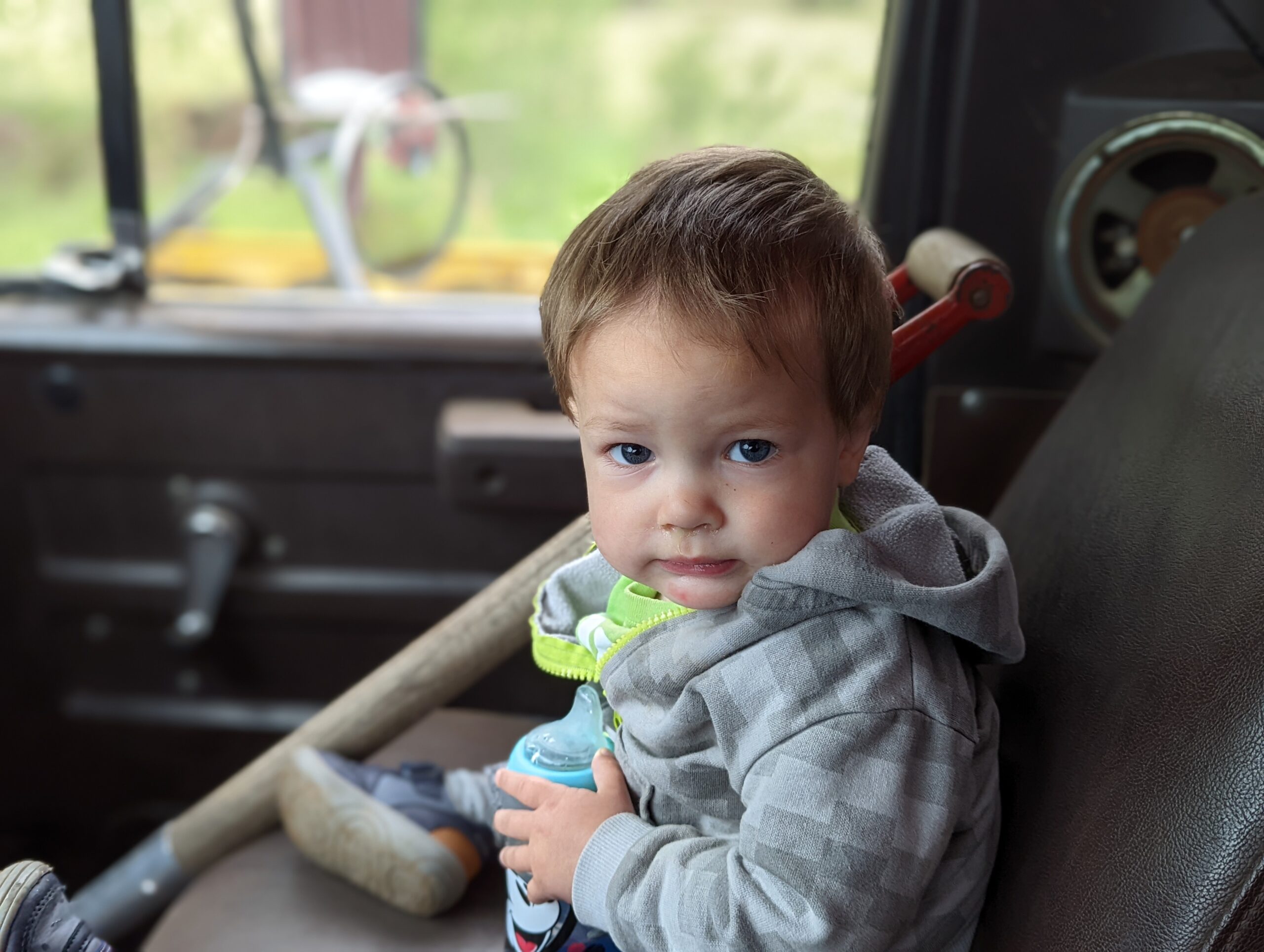
Brian spent the day with me last Friday and was excited to help get soybean seed.
I’m loving the new planter. I did 350 acres in the last two days. I’m seeing the 16-row at somewhere around 35 or 40% faster than the 12-row.
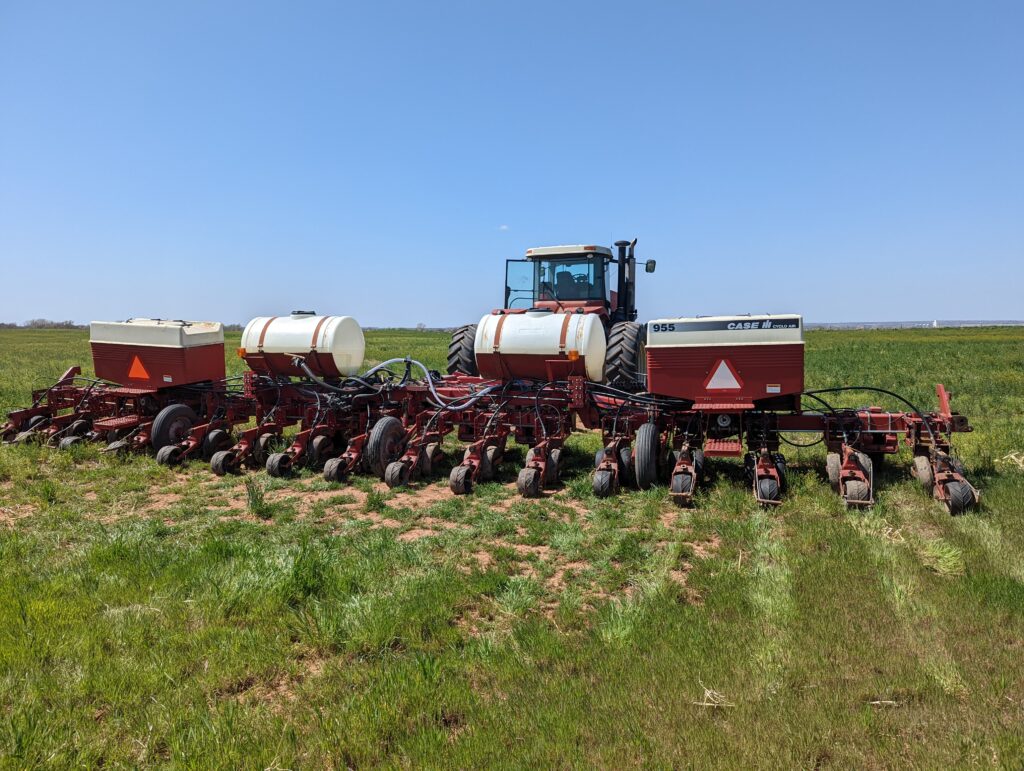
I did have some delays due to a cracked frame and a wiring harness that was weirdly incorrect. After a visit from Craig and a few hours reconfiguring the wiring harness, I was up and running.

After knocking out 650 acres in the last week, I find myself on the final stretch of soybeans before switching to milo. I’m excited to be well ahead of schedule.

Another breath
Last Friday we took the boys to Wichita. Knowing we’d have to hold down at least one needle-fearing child in order to get his immunizations, we couldn’t think of anyone better than our favorite shot-putter to get us the hookup.
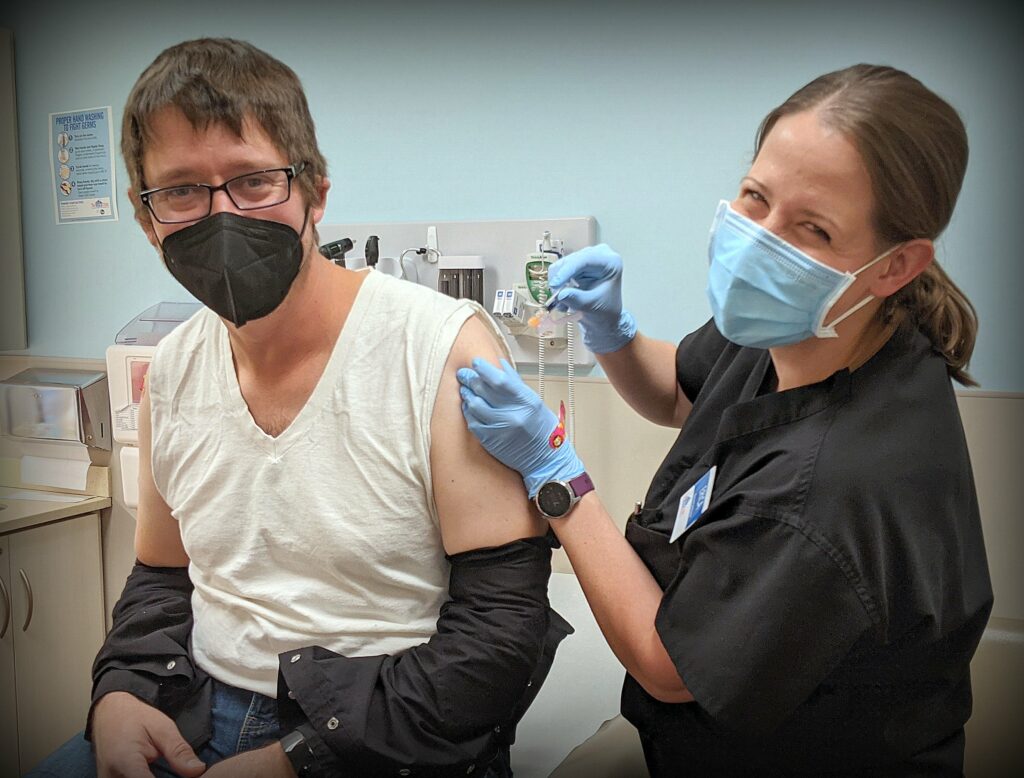
Nolan, Callan and I got two shots each, one in each arm. They each got the fun-sized Pfizer in one and the flu in the other. I got my Moderna booster, after nearly 10 months since the original second shot that I got on inauguration day.
I know the science is clear. I know this is the day I’ve been waiting for forever — the day I can start to protect my children. Still, because I get my news from a wide variety of sources, I’m aware of what a small, wrong-but-loud contingent of the political right are saying about the vaccine and children. It gave me pause, even for a split second. Me, the guy who has been publicly railing against the anti-vaccine movement for well over 15 years now. Me, the guy who repeatedly cites the fact that vaccines are the biggest technological achievement in the history of humanity. Me, the guy who corrects people who claim this vaccine was rushed or quickly developed by reminding them that this mRNA platform has been in development for more than a decade. It still gave me pause, because they were my children.
It was just a momentary lapse of confidence before my brain started working again. But if the misinformation on the right can cause me to blink, what does it do to someone who isn’t paying attention to the facts?
For now, I’ll take a much needed breath and rest slightly easier knowing we’ve taken the first step in protecting our children. Here’s hoping they approve the under-five dosages sooner than later.
House for sale
It’s been a few months since we finally moved to the farm. It’s been an enormous process, and I’m not sure what was more difficult — spending money and time making immediate improvements to the farmhouse or clearing out the old house in Medicine Lodge.
We finally listed the old house. I’m honestly going to miss it, and there are quite a few aspects where it is superior to the farmhouse. But we need to be on the farm and we can’t take the house with us.

